 TOUCHDOWN!
TOUCHDOWN!
New York Giants greats joined guests at the Foundation’s annual Tailgate with Trinitas fundraiser in November. From left, Ottis “OJ” Anderson, MVP of Super Bowl XXV; Gary S. Horan, President and CEO of Trinitas Regional Medical Center; former Defensive End Eric Dorsey who started in Super Bowl XXV; former Nose Tackle Bill Neill; Wide Receiver Stephen Baker, “The Touchdown Maker,” also of the Super Bowl XXV team; Nadine Brechner, Chief Development Officer and Vice President of Trinitas Health Foundation, and Bart Oates, All-Pro Center and veteran of three Super Bowls. The indoor tailgate raised $39,000 to benefit patients at Trinitas.
 OUR DONOR WALL RECOGNIZES GENEROSITY OF SUPPORTERS
OUR DONOR WALL RECOGNIZES GENEROSITY OF SUPPORTERS
Generous donors are vital to the success of Trinitas Regional Medical Center. The Trinitas Health Foundation greatly appreciates every contribution we receive. To recognize our valued supporters, a Donor Wall is now located in the main lobby of the Williamson Street Campus.
It features a central video screen that illustrates the Proud Past and Promising Future of Trinitas. The display offers a historical perspective of our three predecessor hospitals and documents our evolution into the proud institution we know today.
The Donor Wall also features plaques that list the people, organizations, and foundations whose support was so meaningful in 2014. This Donor list will be updated annually. Separate plaques also recognize our Cornerstone Club members and Endowments, individual donors to our Annual Fund and Events, foundations providing Grants, and physician supporters. In 2016, the Donor Wall will also include a plaque to recognize donors to our Emergency Department Capital Campaign.
If you’d like to be included on our Donor Wall, contact Rob Eccles, Director of Major Gifts, at reccles@trinitas.org or (908) 994-8249. Don’t miss this opportunity to make your proud support of Trinitas Regional Medical Center known to everyone who enters our lobby!
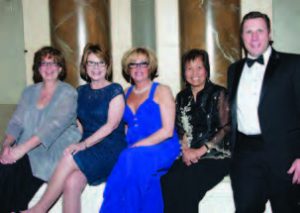 YOU’RE INVITED!
YOU’RE INVITED!
Join enthusiastic support-ers of Trinitas at the 2016 Gala on Thursday, May 12. The Gala returns to The Venetian in Garfield where the breath-taking ambiance of the venue is rivaled only by the extraordinary food and drink. The Infernos Band returns for the third year as entertainment. During a full cocktail hour, guests can meet and mingle, bid on extremely desirable Silent Auction items including trips and one-of-a-kind experiences, and take their chances on the 50/50 raffle, all while helping to raise funds for Trinitas.
For information about the Gala or opportunities for sponsorship, contact Laura Ciraco at Lciraco@trini-tas.org, or (908) 994-8249, or go to www.trinitasrmc.org/foundation.htm and click on the Gala invite.
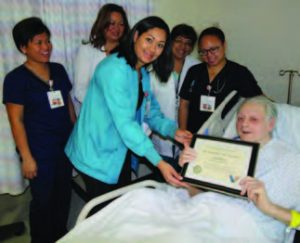 SALUTE TO VETS
SALUTE TO VETS
Thanks to funding support from the Thomas Glasser Foundation, Inc., Trinitas offers enhanced patient care and other services to veterans. The Palliative Care Department and the Hospital Elder Life Program direct veterans to education programs and services they can use. Pictured, Elizabeth resident and World War II veteran, 91-year-old Oran Bryant who served from 1943 – 1946 as a radio operator on a B-29 in China and Burma, received his “We Honor Veterans” certificate in recognition of his service and sacrifice.
News, views and insights on maintaining a healthy edge.
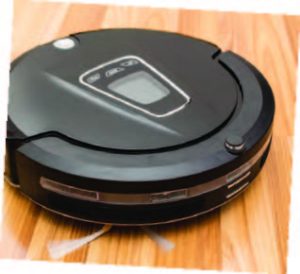 Be Kind to Your Roomba
Be Kind to Your Roomba
One day, perhaps sooner than you think, robots will be playing important roles in our everyday lives. In anticipation of that day, researchers at Japan’s Toyohashi University of Technology initiated a study of how we are likely to interact with humanoid robots. What they found for the first time is neurophysiological evidence that humans are capable of empathizing with robots. When the study group watched humans and robots experiencing pain, they empathized with both in similar ways…only not as deeply with the robots. Researchers accounted for the difference by speculating that humans are unable to see things from a robot’s perspective. The study will help develop human-friendly robots for which we’ll feel more sympathy and be more comfortable with. Rodger Goddard, PhD, Chief Psychologist and Director of Wellness Services at Trinitas

Rodger Goddard, PhD
Chief Psychologist, Trinitas Regional Medical Center Director of Wellness Management Services 908.994.7334
, is not surprised that people feel concern and care for robots. “Many of us already have a personal relationship to our cars, computers and other precious possessions,” he says. “We feel the pain when our car gets dented, bruised, or is in an accident. Our children are comforted by, and connected to, their teddy bears, toys and action figures. And movies already show us how we can sympathize with the feelings of an R2D2 robot.” Besides, such connections are hardwired in the human psyche, Dr. Goddard explains. Primitive people have always ascribed human emotion and intelligence to the things in their surrounding world. We now talk to Siri, OK Google, Amazon Echo and our car’s GPS—proof that our gadgets are very responsive to our questions and needs. Meanwhile, Facebook sharing has already replaced much of what would have been face-to-face interactions. “People who lived 50 to 100 years ago would not have been able to imagine the technologically connected world we live in today,” he continues. ““We also cannot imagine how our world will look—and how much more we will be connected to our machines—50 to 100 years from now.”
An 80% Jump in Autism Rates?
If you look only at the recently released statistics from the CDC and National Center for Health Statistics (NCHS), you’d think that a tidal wave of autism hit the United States in 2014. Indeed, the prevalence of autism in children 3–17 jumped 80 percent in one year. The story behind the numbers? According to epidemiologist Benjamin Zablotsky of the NCHS, in previous years many parents of children diagnosed with autism spectrum disorder reported it as a developmental disability instead of (or in addition to) autism because “developmental disability” was listed first. The 2014 questionnaire flipped the two categories. The silver lining of this story, of course, is that more children will receive help earlier. And the earlier they have access to care, services and treatment, the more likely they are to progress.

Carole Soricelli, MS, OTR
Director, Trinitas Children’s Therapy Services
973.218.6394
Carole Soricelli, Director of Trinitas Children’s Therapy Services (TCTS) in Springfield, can attest to that. “Our occupational, physical and speech-language therapists work with many children diagnosed with Autism Spectrum Disorder (ASD) in schools and in our Therapy Center,” she says. “In recent years, more and more self-contained classrooms accommodate the many individualized needs of the ASD population by providing smaller adult-to-student ratios, classroom environments that facilitate optimal learning for students that have a variety of sensory processing considerations, and related services support. Most curriculums have moved toward a Universal Design for Learning (UDL) model to improve and optimize teaching and learning for all people, based on scientific insights into how humans learn. The result is a learning environment characterized by flexible goals, methods, materials, and assessments that empower educators to meet the varied needs of all students.”
Happy Results from SAD Study
A recent study published in the American Journal of Psychiatry has cast a shadow on the long-held belief that the best way to fight the winter blues is with light. Light therapy used to treat seasonal affective disorder (SAD) has proved to be effective, especially in acute cases. However, a new type of cognitive behavioral therapy designed for SAD sufferers was found in the study to be significantly better when it came to preventing relapses. Forty-six percent of subjects receiving light therapy experienced a recurrence of depression two winters later as compared to 27 percent who received the cognitive behavioral therapy. The depressive symptoms were also more severe in the light therapy group. About 14 million Americans suffer from SAD.
 Walk This Way
Walk This Way
Older adults who make an effort to exercise daily stand an excellent chance of delaying cognitive decline and prolonging their independence. A study at Boston University, published in the Journal of the International Neuropsychological Society, compared a group of young adults and older adults who engaged in rigorous physical activity and then took memory, planning and problem-solving tests. The study found that members of the older group (ages 55–82) who took more steps (and more vigorous steps) performed better on these tests—particularly one that involved recalling which name went with a person’s face. This result is exciting because it suggests that physical activity will extend long-term memory, which is the type of memory that is negatively impacted by aging.

Jim Dunleavy, PT DPT MS
Director, Rehabilitation Services
908.994.5406
Jim Dunleavy, PT DPT MS, Doctor of Physical Therapy and Director, Rehabilitation Services, notes that, “while rigorous activity is the level cited in this study, we have seen improvement in patients even with sub-maximal exercise/activity. If a person is sedentary, just starting a walking program can make big changes in physical and mental wellbeing.”
 Can You Hear Me Now?
Can You Hear Me Now?
Can hearing loss make you dumber? No, not exactly. However, people with a hearing impairment who choose not to wear a hearing aid, may be devoting way too much of their cognitive resources in order to figure out what others are saying. A report issued by the University of Texas at El Paso (UTEP) maintains that untreated hearing loss can lead to serious emotional and social issues, reduced job performance and a diminished quality of life. And also interfere with cognitive abilities. This is particularly important for the 10 million Americans between the ages of 46 and 64 suffering from hearing loss—80 percent of whom do not use a hearing aid. The UTEP study looked at subjects in their 50s and 60s who had never worn hearing aids. After only two weeks of use, they did better recalling words in working memory and selective attention tests, and improved the processing speed at which they responded.
 Is There Really A ‘Fat’ Gene?
Is There Really A ‘Fat’ Gene?
According to the National Institutes of Health, there is. NIH researchers announced this fall that they believe a single variation in the gene for brain-derived neurotropic factor (BDNF) may influence obesity, both in adults and children. Dr. Jack A. Yanovski, an investigator at NIH’s Eunice Kennedy Shriver National Institute of Child Health and Human Development, notes that this less-common version may predispose people to obesity by producing lower levels of BDNF protein, which is a regulator of appetite. “The BDNF gene has previously been linked to obesity, and scientists have been working for several years to understand how changes in this particular gene may predispose people to obesity,” says Yanovski. Rather than being a rare mutation, the less common variation of BDNF actually occurs in the general population and that’s an important fact. So, is there any way we can increase BDNF level in the body?

Yelena Samofalov, MD Trinitas Pediatric Health Center 908.994.5750
Dr. Yelena Samofalov, Trinitas Pediatric Center, believes so. “Previously, it was thought that only vigorous exercise could stimulate production of this less-common version of BDNF,” she explains. “However, recent research shows that simple walking or doing light housework or yardwork can present benefits of not only staying fit, but increasing synthesis of BDNF in the brain.” Dr. Samofalov and Dr. Yanovski concur that boosting BDNF protein levels could offer help to people with the gene variation—which tends to occur with greater frequency in Hispanics and African Americans than in Caucasians.
 New Advance in Artificial Intelligence
New Advance in Artificial Intelligence
University of Chicago bioengineers have developed a mathematical algorithm that can sense what the human body “wants” to do in everyday situations. They believe it is that help people overcome obstacles and disturbances—from cars that steer out of icy skids to prosthetics that help stroke patients complete simple tasks smoothly. “If you know how someone is moving and what the disturbance is, you can tell the underlying intent,” explains Justin Horowitz, who authored the study, who adds that machines programmed with these algorithms could react and correct in a fraction of the time it takes average humans—who sometime freeze and don’t react at all.
The Big Chill
The human body possesses an amazing ability to maintain thermoregulation at a temperature not too hot or not too cold. It’s almost like there’s a thermostat that balances heat production and heat loss. Hypothermia occurs when extreme cold sends the body’s temperature below 95° F. However, hypothermia can occur at any temperature lower than normal body temperature. Factors including body fat, age, alcohol consumption and, especially, wetness can affect how long hypothermia takes to strike. So you don’t always see hypothermia coming—which is why we often use the term accidental hypothermia.
What are some of the early warning signs of accidental hypothermia?
Warning signs include uncontrolled shivering, memory loss, disorientation, incoherence, slurred speech, drowsiness and obvious exhaustion.

www.istockphoto.com
Who’s most at-risk?
The elderly and the very young. The next time you visit your parents or grandparents, notice how thin their skin appears. As we age, we lose the insulating protection of muscle, soft tissue and fat under our skin. Children, on the other hand, have a higher metabolic demand, requiring more heat production.
Besides freezing cold, do other elements come into play?
Yes. Wind and water also play a pivotal role in temperature control. Both elements can precipitously cool the body to perilous temperatures in rapid order.
How is it that some people—like the ones on reality television shows set in Alaska—can tolerate extremely frigid temperatures?
It’s called the “hunting response.” In most of us, cold leads to vasoconstriction, which is narrowing of the blood vessels. Repeated exposure to the cold, however, causes an adaptive physiology to occur. Those in Arctic climates possess the ability to vasodilate blood vessels in a cyclical pattern. When the extremities and skin begin to lose heat, the body shunts warmed blood to the skin, effectively warming the extremities. This occurs in a repetitive pattern to maintain thermoregulation.
Is shivering a bad thing?
On the contrary, shivering is essential to thermoregulation. In colder temperatures, you shiver to produce heat in your muscles. Small children will shiver after a bath in an attempt to raise their temperature immediately. Shivering is a very effective way to produce heat. It’s nature’s way of keeping our temperature from falling below 98.6° F.

www.istockphoto.com
What can you do to treat accidental hypothermia?
Passive re-warming methods should be carried out for most mild hypothermia patients. A person should be removed from the cold environment. Moist, wet clothing should be removed. The body should be examined for signs of cold-related injuries. Warm clothing in layers should be applied. Passive re-warming methods typically raise the temperature by 0.5° C to 2° C per hour.
What about using warm water to raise body temperature?
I have my reservations. Immersing a foot or a hand is very effective at warming an extremity. However, my trepidation resides with the possibility of incurring a thermal burn during the process. Even simple heating packs or pads can lead to burns.
Does alcohol warm the blood?
No. Alcohol dilates blood vessels, leading to heat loss. Also, alcohol impairs judgment, which could potentiate cold-related injuries.
How Do I Know if I Have Frostbite?
Warning signs of frostbite include numbness and lack of color. Fingers, toes, ear lobes, and the tip of the nose are the areas most susceptible to cold-related injuries. At or below 0° C, blood vessels close to the skin constrict and shunt blood away from the extremities.
This “life vs. limb” response is designed to protect vital organs such as the brain and the heart.
Typically, in our region, we see frostnip and chilblains. These are less severe cold-related extremity injuries in which the tissue never completely freezes. Burning and itching occur, followed by red and yellow patches. Transient numbness can occur but the damage is not permanent.
 Is It True You Should Hold Your Breath in an Avalanche?
Is It True You Should Hold Your Breath in an Avalanche?
Avalanche victims typically die either through direct trauma or asphyxia. The snow becomes packed in the mouth, leading to suffocation. Avalanche survivors have better outcomes when they are recovered with their mouth closed. Assuming you survive the trauma of an avalanche, then hopefully you’ll find an air pocket to breathe.
Of course, you’re not out of the woods at that point. Hypothermia sets in rapidly, slowing the metabolism down until your heart stops beating. If a rescue team can get to the victim relatively quickly, people have survived at body temperatures as low as 64° F. Thirty-five minutes seems to be the magic number associated with favorable outcomes.

John D’Angelo, DO Chairman/Emergency Medicine Trinitas Regional Medical Center
Editor’s Note: John D’Angelo, DO, is the Chairman of Emergency Medicine at Trinitas Regional Medical Center. He has been instrumental in introducing key emergency medical protocols at Trinitas, including the life-saving Code STemi, which significantly reduces the amount of time it takes for cardiac patients to move from the emergency setting to the cardiac catheterization lab for treatment.
Two decades in, the Trinitas HIV program has set new standards for success.
By Erik Slagle
A few years ago, Shawn Sullivan was at a barbecue. “No red meat for me,” she told the cook at the grill. “Can’t have it with my HIV.” Later, a young woman who had overheard the remark approached Shawn and said she, too, was HIV-positive. She didn’t know where to turn, and didn’t have anyone she could talk to about her condition. She asked Shawn for any advice or direction she could provide. “Come to the Trinitas HIV clinic,” Shawn told her. “I gave her my phone number and told her, ‘I’ll bring you. You won’t be alone

www.istockphoto.com
For 20 years, the HIV program at Trinitas Regional Medical Center has served as a beacon of hope for members of the community living with the virus. Without a lot of fanfare—or the publicity that comes with, say, breakthroughs in cancer treatments or heart disease—the program has provided care to thousands of HIV-positive patients…and helped them learn to care for themselves.
“This is a program that goes above and beyond for the population it serves,” says Judith Lacinak, Director of HIV Services. “We don’t only treat the patients who come to us. We seek them out, offer free testing to people who think they might be at risk, and break down the stigma that’s still attached to having HIV
Nearly 3,000 people in Union County are living with HIV or AIDS, Lacinak adds. “And from anywhere in the county, they can come to us for help.”
Dr. Julius Salamera of the hospital’s Infectious Disease Department has worked with the HIV program at Trinitas for more than three years. He says the program currently serves about 600 patients—providing medical help but also supporting them through counseling with family issues and, when needed, substance-abuse treatment
“One of things we try to do at Trinitas is get to the root of each patient’s particular problem,” he explains. “For example, why have they stopped taking their medication?Some might prioritize narcotics over the meds they need to stay healthy. Others might encounter insurance problems with their prescriptions. We want to help them understand that, if you’re on medication, then you’re under control. People are living as long as 30 years or more with HIV, and the public at large needs to be educated about this.”
These days, Dr. Salamera explains, HIV is viewed in the medical field as a chronic disease – the same as diabetes or hypertension. The right combination of meds and therapy means the outlook for people living with the virus has greatly improved since AIDS first came into the public consciousness more than three decades ago. Shawn Sullivan is an example of how the evolution of HIV treatment, and the emergence of programs like the one at Trinitas, have altered the landscape.
“I’ve lived with HIV for almost 20 years,” she says. “And the clinic at Trinitas has been a big part of that. I wouldn’t be in the position I’m in now if it wasn’t for them. And I wish—everyone at the clinic wishes—more people with HIV would come in for help.”
A combination of obstacles (the stigma of admitting to having HIV, an increasingly complicated insurance field, lack of familial support, and in some cases the problem of substance abuse) keeps many with HIV from getting treated for the disease. In addition, finding those who need help can be one of the most challenging aspects of running an HIV program, but it’s one the Trinitas team is meeting head-on.
“We can meet the demand,” Lacinak says. “But the demand doesn’t always present itself.”
Getting a patient in the door is sometimes just the first step. If a patient stops coming in for his or her scheduled appointments, the team proactively goes out in search of the patient. A substance-abuse counselor will go out into the community, while the staff won’t hesitate to involve the police and paramedics if they sense something is wrong. It’s all part of the HIV clinic’s larger role as a presence in the community, not just a department in the hospital.
The HIV program at Trinitas works with homeless shelters and houses of worship to reach out to people who may need help, and the team takes part in local health fairs to spread the word about the services that are available. They provide mental health assessments, linkage to proper care, literature and educational events in conjunction with pharmaceutical companies, and permanency planning when needed. Lacinak credits the clinic staff for its tireless advocacy on behalf of HIV patients in and around Union County.
“We have a truly amazing team,” she says. “Our case managers are the backbone of the clinic. They work so very hard to make sure people show up for their appointments and are connected to the services and support they need. It’s like being someone’s personal assistant. It’s just an incredible group, and we’ve all got the same goal: helping patients manage their health and have a non-detectable virus
Today, more than 80 percent of patients at the Trinitas clinic are considered non-detectable. The program is helping them remain healthy, while keeping their HIV disease under control. Not everyone, however, succeeds. Patients may drop out, end up in jail, leave the area or, ultimately, lose their battle with the disease.
To people like Sullivan, the impact of these programs is immeasurable. “People need programs like this,” she says. “If they didn’t have this center, they’d have nothing. Look at me, look at the outcomes. Communities need these kinds of services.”

www.istockphoto.com
The Trinitas clinic, she adds, is more than simply a medical center for people with an illness. “The people there become like a second family…your HIV family.”
Sullivan, whom the Trinitas team has affectionately dubbed “The Mayor,” is always looking for ways to give back for the new life she’s been afforded by the clinic. “When I meet someone who is HIV-positive, I encourage them to come to the clinic and start getting the help they need,” she says. “I tell them, this is what you’re going to do. You’re coming to the clinic—I’m going with you. We’re going to work on living. When you’re ready, I’ll be there with you
When the community needs support and a partner in the fight against HIV, the Trinitas HIV clinic is there with those affected by the virus. For Shawn Sullivan, and thousands of others throughout the last two decades, it has been a lifeline. For a patient group still stigmatized by a three-letter diagnosis, it’s a haven. And it’s another example of how Trinitas Regional Medical Center is going above and beyond for the community at large
Editor’s Note: The Trinitas HIV Clinic is located at 655 Livingston Street in Elizabeth—about a mile east of TRMC’s main campus on Williamson Street. For more information, call (908) 994-7600.
The top medical breakthroughs of 2015…and 2016…and beyond.
By Christine Gibbs
In the field of medicine, today’s science fact can sound a lot like yesterday’s science fiction. In 2015, we read about back-to-front face transplants, mind-controlled bionic hands and smart antibiotics—all of which are here and happening. We also heard about cancer-killing nano-robots and head transplants, which are, as they say, “still in the works.” In addition to these headline-grabbing advances, researchers are building on earlier breakthroughs to improve the length and quality of human life

www.istockphoto.com
Consider, for instance, the Human Genome Project, which was completed in 2003 and which was covered in these pages in the spring of 2013. In the three years since, there have been a number of important advances in the treatment and cure of chronic and life-threatening diseases and disabilities. In the 2015 calendar year alone, scientists created the first roadmap of the epigenome (which consists of chemical compounds that modify the genome and tell it what to do), discovered genomic information on how skin changes with aging and sun exposure, and learned how to use known genetic associations to improve the development success rates of new drugs. Scientists also reverse-engineered the complex genetics of infertility, which in turn triggered research that holds promise for up to half the people who experience reproductive difficulty.
Other recent breakthroughs that have a profound and ongoing impact on our lives range from targeted cancer therapies to stem cell research to laparoscopic surgical techniques. According to the National Cancer Institute, radiation and chemo may soon be replaced by treatments developed to hit molecular targets produced by the patient’s tumor itself. Cloned human stem cells, meanwhile, hold special promise for treating diseases of the heart and eye. And more than 2 million minimally invasive surgeries are done laparascopically in the U.S. each year, saving patients a lot of discomfort and saving the healthcare system countless billions. Recent advances in the treatment of migraines and Hepatitis C, as well as the development of a smarter pregnancy test, have also changed our lives for the better.
THE BIG THREE
My picks for the top three breakthroughs of 2015, as mentioned in the opening paragraph, are (in no particular order) the face transplant, bionic limb and antibiotic stories. Back in 2001, volunteer firefighter Pat Hardison lost almost all of his facial features—including his hair and ears—battling a mobile home blaze. In 2015, he received the most comprehensive face transplant ever attempted, from a BMX biker who was killed in an accident. The 26-hour procedure was performed by a team of more than 100 doctors, nurses and technicians, led by Dr. Eduardo Rodriguez of NYU Medical Center. They grafted both the front and back of the donor’s head to Hardison’s.
In Austria, three patients received robotic hands that can be manipulated directly by the brain. The bionic hands have sensors that respond to electrical impulses from muscles that were transplanted from their legs to their arms. A few years ago, people who lost hands in traumatic accidents had to make do with mechanical prosthetics. The three Austrian men are able to button their shirts and pour water—tasks that were all but impossible with the old technology.
Perhaps the most important breakthrough of 2015 emerged from the battleground with drug-resistant super bugs—with emphasis on ground. Bacteriologists at Northwestern University discovered teixobactin while studying soil bacteria. The drug safely killed even the toughest infections it encountered in trials with mice, and human trials may not be far away.

www.istockphoto.com
NEW YEAR, NEW BREAKTHROUGHS
What kinds of breakthroughs will we be writing about a year from now? That’s impossible to say. So much work is being done outside what we consider the mainstream that one never knows where the next big story will come from. However, we do know what’s in the pipeline. According to the Cleveland Clinic, the Top 10 medical innovations for 2016 are likely to be:
- A seriously promising Ebola vaccine may be licensed for use on humans this year.
- CRISPR, a genome-editing tool, is presenting a possible way to eliminate genetic diseases by identifying and removing bad genes from a DNA strand—and it could cost as little as $30.
- Cell-free fetal DNA testing for Down’s and Edwards syndrome that is far more accurate than standard blood or ultrasound tests may soon be available.
- In 2016, a new biomarker technology that focuses on changes in the structure of certain blood proteins will offer more accurate cancer screenings and earlier detection. Advances in the technology of breath analysis are also offering promise for even earlier non-invasive detection.
- Swedish scientists have developed the first mind-controlled prosthetic arm.
- Cleveland researchers have developed an under-the-skin system of wires and electrodes that recently restored the sense of touch to two amputees.
- Biosensors are being developed to monitor glucose and other vital statistics. Another remote device is a bandage that can diagnose pregnancy, hypertension or hydration from sweat molecules.
- A tiny device called a neurovascular stent retriever can entrap and remove deadly clots. It will be available in many hospitals this year.
- A study found that resveratrol—a compound found in red grapes, red wine and dark chocolate—may help treat Alzheimer’s disease.
- An “artificial pancreas” is under development that provides a sensor and insulin pump to automatically check blood sugar levels in Type 1 diabetics.
All of this potential in the various fields of medicine is exciting and exhilarating, Yet at the same time, it raises some crucial questions. Where will medical technology and advances in treatment take us as a society with regard to certain moral and ethical issues—such as unbridled longevity, genetic manipulation, and enhanced intelligence? And how will all these medical miracles impact us economically, politically and socially? Big questions for big breakthroughs.
 BREAKTHROUGH: FEMALE INCONTINENCE
BREAKTHROUGH: FEMALE INCONTINENCE
Trinitas OB/GYN Chairman Dr. Labib E. Riachi, is dedicated to neutralizing the taboo regarding female urinary incontinence. Recent advances in technology have reduced a previous 2–3 day post-surgery stay in hospital to a 5–10 minute, same-day outpatient visit. In lay terms, he summarizes the operation as employing a piece of polypropylene mesh, which he calls “Scotch tape,” that works 90% of the time to reduce 90% of any incontinence issue. “The tape is getting smaller and the surgery even shorter,” says Dr. Riachi, whose subspecialty is female pelvic and reconstructive surgery. He is committed to educating physicians and their female patients to eliminate any embarrassment about a problem that can now be corrected quickly, safely and easily, “yet can change a woman’s life 180 degrees.”
 BREAKTHROUGH: PACS
BREAKTHROUGH: PACS
In the field of Radiology, says Dr. Eugene Kennedy, Chairman of the Trinitas Radiology Department, significant advances tend to build off of breakthroughs “that happened a while ago, but just continue to expand and develop,” such as:
- Multi-detector Spiral CT, which has revolutionized not only how to perform a CT scan, but also what can be imaged, revolutionizing “how we image the body from head to toe.”
- Positron Emission Tomography (PET-CT), which advanced cancer imaging from solely anatomic to functional physiologic imaging.
- Magnetic Resonance Imaging (MRI), which as a technology has continued to expand in all areas of imaging, including neuroradiology, musculoskeletal radiology, women’s imaging and body imaging.
Pressed to choose one recent breakthrough, Dr. Kennedy says that the Picture Archiving and Communication System (PACS)—which he uses in his private practice—helps him to supply the best possible patient care. One of its sweeping innovations, he explains, is that “PACS images can be viewed simultaneously by numerous different individuals in diverse places.” This makes possible real-time consultations between radiologists and other MDs.
 ON THE HORIZON
ON THE HORIZON
A decade from now, we will be celebrating these five medical breakthroughs:
1 Vision Quest: Microchip implants will help the blind to see.
2 Organs to Go: Tissue engineering or regenerative medicine that will let scientists “grow” new organs.
3 Rewired: Microchip technology, along with a matrix of fiber optic wires, will bridge damaged areas of the brain to cure a multitude of neurological conditions…and possibly even expand human brainpower.
4 Uplifting: Nanotechnology will be applied to a variety of age-reversing procedures.
5 Heart Beats: Stem cells extracted from bone marrow will help new vessels grow to increase blood flow to the heart.
Wow factor in Westfield
By Mark Stewart

James and Tina Wissel’s single-story, three-bedroom, 4,000-square-foot home is not the only structure in Westfield that fits that general description. However, it is most definitely the only one of its kind. The Wissels designed their modern, single-story structure to take maximum advantage of their wooded, ¾-acre lot—pulling the outside in, and making the interior an open and inviting space for their family, friends and pets. They are living the dream few of us have the courage to pursue: a residence custom-built to accommodate their personal comfort, design sensibilities and family culture.
The more time one spends in the Wissels’ home, which was completed in 2009, the more apparent it becomes that every detail, from the daring to the mundane, began with an original thought—hardly a shock, as James and Tina make their living as original thinkers. James’ father was a home-builder, and as far back as he can remember he was good at bringing ideas to life with his head and his hands. Tina’s mom and dad were clothing designers; function and form are coded into her DNA. James and Tina designed computer animation and editing systems in the 1990s. Today, they co-own Pure Couture, a thriving ready-to-wear fashion business.
“We used our expertise and experience in design to create our home on a computer over the course of several months,” James explains. “From those drawings we made 3D scale models, and eventually these were translated into architectural plans.”
Their list of must-haves was extensive, Tina recalls. The majority of the space needed to integrate living areas—the kitchen, living room, dining room and family room—into a long, deep open design.
“Our goal was to create space we’d use every day,” she says. “We didn’t want to end up with a dining room we use twice a year.”
The Wissels achieved this goal with 11-foot ceilings throughout the home, including three 11’ x 18’ glass walls, floor-to-ceiling mitered corner windows, and a kitchen nook featuring a curved glass window that offers a panoramic view of the oaks, maples and wildlife in their back yard. The kitchen features sleek stainless steel, with a sink and stovetop that can be covered to integrate with the rest of the appliance surfaces. The home’s ambiance is heightened by an interior waterfall that separates the living and bedroom areas, creating a natural sound barrier in the process. An exterior waterfall obscures the massive 42” x 11’ front door and creates a unique little entry alcove.
The home required the extensive use of steel; engineered lumber was used to create a spectacular unsupported 33-foot span.

 “From what we first imagined, we achieved 85 to 90 percent of our initial vision,” James estimates, adding that although the goal of a designer is to marry form and function, sometimes one must be sacrificed for the other. “That’s how I come up with 85 to 90. We chose some details that are aesthetically pleasing but not very functional. However, in terms of what we wanted the house to be, we achieved.”
“From what we first imagined, we achieved 85 to 90 percent of our initial vision,” James estimates, adding that although the goal of a designer is to marry form and function, sometimes one must be sacrificed for the other. “That’s how I come up with 85 to 90. We chose some details that are aesthetically pleasing but not very functional. However, in terms of what we wanted the house to be, we achieved.”
Which choices best met the form and function equation? Tina says the window walls work especially well.
“They bring you closer to nature,” she explains. “We did a lot of landscaping before we built, and the way the outdoors pours in is breathtaking. I don’t think we fully appreciated the positive effect this would have on our children and pets when we were designing the house. The sunset, the moon, the hummingbirds—they’re out there free for everyone, but in other homes, you don’t always notice them. Here, they are at our fingertips.
Different smokes for different folks
By Mike Cohen
Most New Jerseyans live in “smoke-free” homes. That may change soon, but probably not the way you’d think. While the typical backyard cooking set-up includes a grill and possibly a barbecue, relatively few have incorporated a smoker. Smoked meats are nothing new, of course, but recently they are showing up on the menus of some of the region’s top restaurants. Chefs are paying top dollar for artisanal smoked meat, fish and poultry (and passing that cost along to their patrons); some have even assembled their own smoking operations on-site or nearby.

www.istockphoto.com
So how hard can it be for an average homeowner to add a smoker to the mix? Unlike grills and barbecues, which are fairly simple to operate, smokers can be somewhat counterintuitive. Before burning rubber to Home Depot or Lowe’s to get your new gear, it’s important to understand and respect the process. Unlike grilling (which involves direct, high heat from start to finish) and barbecuing (lower temperature and longer cook time), smoking is essentially the process of “preserving” food with a low temperature while adding salt and smoke. The smoke infuses flavor, while the salt pulls water out of the meat.
HOT VS. COLD
Most of the smokers on the market are “hot” smokers. They operate at a temperature of 160° or higher and are aimed at backyard chefs who want their food done relatively quickly. This type of smoking doesn’t really preserve the meat, as there isn’t enough time for the moisture to be removed. The pros tend to go for “cold” smokers, which involve a little more pre-planning and patience. The results are well worth it.
Cold smoking typically is a two-step process. Salt is added to remove excess moisture and then the food is subjected to a long, slow smoking process. It involves cooking below 86°F for up to 32 hours. The heat source is kept away from the product and the smoke is pipped in. Some of the newer smokers can be dialed down to work this way. Both methods of smoking brown the meat, as amino acids in the food interact with some reduced sugars to produce the desired color. To create that “smoke ring,” nitric oxide from burning wood combines with the myoglobin in the meat to penetrate a centimeter or so in from the surface. You won’t see a smoke ring if meat is cooked in an oven.
Smoking is more than just heat and smoke. There are essentials to consider, such as sugar and salt for curing and brining, which add just the right combinations of sweet, sour and bitter flavors to your meal.
Curing your protein before smoking helps remove moisture and stop the formation of harmful bacteria (that’s a good thing) and will also enhance the flavor (that’s a better thing).
 Brining meat in a mixture of water, salt and perhaps spices and herbs, dramatically impacts the flavor profile. There are many rules about brining, but a simplistic rule is 1 hour of brining for every 2 pounds of product.
Brining meat in a mixture of water, salt and perhaps spices and herbs, dramatically impacts the flavor profile. There are many rules about brining, but a simplistic rule is 1 hour of brining for every 2 pounds of product.
 For those who have medical concerns about sodium, there is another option. You can salt your meat prior to smoking. A mix of salt and pepper, herbs, sugar and honey can be rubbed over your food anywhere from 2 to 24 hours beforehand (which needs to be removed before it goes in the smoker). The idea is to draw out the moisture without the BP bump. Whichever method you prefer, the purpose of salting is the same: less moisture actually allows for a better absorption of the smoky flavor.
For those who have medical concerns about sodium, there is another option. You can salt your meat prior to smoking. A mix of salt and pepper, herbs, sugar and honey can be rubbed over your food anywhere from 2 to 24 hours beforehand (which needs to be removed before it goes in the smoker). The idea is to draw out the moisture without the BP bump. Whichever method you prefer, the purpose of salting is the same: less moisture actually allows for a better absorption of the smoky flavor.
Not to be excluded from the conversation is marinating. Mixing spices, oils, vinegars and even citrus to meals both flavors and tenderizes your final product. Some marinades work best before smoking, while others work best after smoking and right before eating. Meats do particularly well with marinades, which can be as simple as applying Worcestershire sauce just before smoking. Technically, dry rub is a type of marinade. This spice and salt mixture, worked into the food prior to cooking, seals in flavor and softens the texture. This is a tad more subtle and delicate than salting, so get a feel for your particular taste-bud tantalizers before rubbing this all over your Whole Foods purchase. Finally, just for the record, air-drying your meat is another option. This will surely impress your guests, but your neighbors may wonder what the heck you’re up to when they peek over the fence the day before.
 KNOW YOUR SMOKER
KNOW YOUR SMOKER
Not everyone is ready to do battle on a basic-cable barbecue throwdown, so it’s good to know which smoker best suits your lifestyle and circumstance before handing over your credit card or clicking the BUY button. Compact, stainless steel electric smokers, for example, tend to be economical and fairly mobile. Two popular brands are Southern Country Smokers and Masterbuilt (immediate right). They can cook food fairly quickly if that’s a priority—say, if your Thanksgiving guests are waiting for that smoked turkey to hit the table.
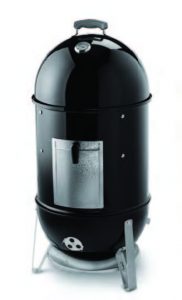 Kettle smokers (aka hinged-lid cookers) are the ones you often encounter at home improvement and hardware stores. Weber makes a popular model I see everywhere. This type of smoker (far right) also can double as an oven for larger pieces of meat or poultry. This is your basic charcoal- or gas- fired smoker that uses wood chips to create the smoke. Soaking your chips, or a portion of your chips, prior to burning will produce a longer, slower burn time—a critical component to backyard smoking success. In this variety of smoker, consider placing a water tray alongside your meal to prevent your food from drying out.
Kettle smokers (aka hinged-lid cookers) are the ones you often encounter at home improvement and hardware stores. Weber makes a popular model I see everywhere. This type of smoker (far right) also can double as an oven for larger pieces of meat or poultry. This is your basic charcoal- or gas- fired smoker that uses wood chips to create the smoke. Soaking your chips, or a portion of your chips, prior to burning will produce a longer, slower burn time—a critical component to backyard smoking success. In this variety of smoker, consider placing a water tray alongside your meal to prevent your food from drying out.
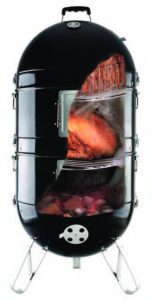 One caveat is that kettle smokers are not good for guys I call “Larry the Lifter”—who can’t resist taking periodic peeks at the meat. Every time you open the lid, all the smoke that’s supposed to go into the food goes into the air. It adds about 10 minutes per lift to your cook time.
One caveat is that kettle smokers are not good for guys I call “Larry the Lifter”—who can’t resist taking periodic peeks at the meat. Every time you open the lid, all the smoke that’s supposed to go into the food goes into the air. It adds about 10 minutes per lift to your cook time.
Cold smokers make up a wide-open category that includes everything from purchased products to funky homemade devices. Their advantage is that it enables you to smoke a large variety of meats at the same time, or accommodate large cuts, and food can be smoked subtly and over a long period of time, which allows the smoke to penetrate without overpowering. The ProQ from Mac’s BBQ (left) is a good model, as it allows you to set up a heat source that can be monitored by way of a built-in temperature gauge. It also doubles as a water smoker. Water smokers are ideal for lean products, such as rabbit or quail, as well as soft and delicate fish.
 For those who need to get their smoke on 12 months a year, gas smokers are the way to go. They offer hot and cold smoking with racking and hanging capacity. Easy to move and carry, they can be placed anywhere in the backyard, as long as they are far enough away from objects that you don’t want to sacrifice to the barbecue gods. Make sure there is plenty of ventilation around all sides of the smoker. The propane unit from Camp Chef (above) is a popular example of a gas smoker. Its temperature gauge enables you to switch between hot or cold smoking by dialing in the right temperature. Another benefit is not having to worry about overcooking or drying out the food, as you can control this like an oven.
For those who need to get their smoke on 12 months a year, gas smokers are the way to go. They offer hot and cold smoking with racking and hanging capacity. Easy to move and carry, they can be placed anywhere in the backyard, as long as they are far enough away from objects that you don’t want to sacrifice to the barbecue gods. Make sure there is plenty of ventilation around all sides of the smoker. The propane unit from Camp Chef (above) is a popular example of a gas smoker. Its temperature gauge enables you to switch between hot or cold smoking by dialing in the right temperature. Another benefit is not having to worry about overcooking or drying out the food, as you can control this like an oven.
TOASTING THE CHEF
In the prophetic words of Eagles guitarist Joe Walsh, “The smoker you drink, the player you get.” I’m still not sure what he meant, but I can say with some authority that what you pair with smoked meats can dramatically enhance the experience. Chardonnays are quite the standard around backyard get-togethers, which is fine, but consider taking things a little farther. Get some advice on a barrel-aged gem from Napa or Sonoma that will match with the woody undertones of your meal—one that has a little malolactic fermentation will also add some buttery notes to soften the bitters of the smoke. Look for Far Niente, Cakebread, Frank Family and Neyers. Champagne-wise, the Blanc de Blancs are all chardonnay with the best coming from Cote des Blancs.
If you favor reds, resist the temptation to bring out the monster cab; with all the smoke in the air, the rich fruits may clash with your meal. Syrah from the Rhone Valley in France, with its characteristic pepper aroma leading you into the spice corridor is absolutely stunning with smoked meats. Think of JL Chave, Paul Jaboulet or Chapoutier for your selections. Washington State makes killer syrahs, even better than their cabernets, but don’t tell anyone— it’s the sommelier’s secret. Dunham Cellars, Gramercy Cellars, and Reininger come to mind as superb syrahs for your feast.
Zinfandel usually makes an appearance at most barbecue events and for good reason. Sweet raspberry with some spice hits the spot when taking down some smoke. Napa offers some real value, believe it or not. Consider Elyse, Summers and Chase as brands to trust without breaking the bank. Russian River and it’s cool climate seems to me to be the perfect spot for zin. Check out Williams Selyem or Joseph Swan.
 Finally, if you have doctored up your smoky creation with a fiery rub and added some chilis to the wood, the great fill here is one of those fabulous sweet German Rieslings. Sugar puts out the fire, alcohol does not—it makes it worse—so do not grab that high alcohol content wine you think will pair power with power. Grab the good stuff from St. Urbans Hof or JJ Prum.
Finally, if you have doctored up your smoky creation with a fiery rub and added some chilis to the wood, the great fill here is one of those fabulous sweet German Rieslings. Sugar puts out the fire, alcohol does not—it makes it worse—so do not grab that high alcohol content wine you think will pair power with power. Grab the good stuff from St. Urbans Hof or JJ Prum.
INTO THE WOOD
Wood chips for the accomplished smoker are available just about everywhere. So too are wood pellets, but do your research as some pellets use binders, which is not good because binders can influence the food in a bad way. A safe way to ensure you are getting the good stuff?Go to your local lumber yard and ask for some sawdust. It’s cheap and effective. If you want to get adventurous:
Alder Wood Delicate and good for smoking fish—pork, poultry and game birds, too
Almond Sweet and nutty taste that goes with all meats
Apple Wood Sweet and fruity taste that works best with poultry, ham, beef and game
Cherry Wood Mild, sweet and very fruity—ideal for poultry, fish and ham
Grape Vines Aromatic and excellent with all meats
Hickory Best known and most widely distributed—very pungent and good for bacon and other dense meat products
Maple Wood Light and sweet taste, best for poultry and ham
Mesquite Expensive and also quite intense, as it burns very hot—best to mix with lighter woods as it can be a little bitter
Oak Strong flavor that’s good for longer smoking times, including brisket and thick cuts of meat
Walnut Heavy smoking wood that can often be mixed with other lighter woods—perfect with stronger red meats and game
SPICE, GIRL
Prepping your meat for smoking almost never requires a special trip to the grocery store. Most of these spices are already in your kitchen cabinet…
Allspice That nutmeg, cinnamon and clove aroma is perfect for brining and also for rubs
Aniseed Sublime with seafood and game meats
Basil Pungent and sweet—reserved for lamb, tomatoes and chicken
Bay Leaf Can be added to your smoking woods Caraway Peppery and perfect when making sausages
Cardamom Lemony and slightly bitter—perfect with salmon and brines
Chervil Fragrant and delicate, so use it with seafood and white meats only
Chili Add to your smoking chips—sparingly
Cilantro Sweet with some sandalwood notes and perfect with brines and rubs
Cumin Strong, so best in marinades
Dill Sharp, fragrant and sweet—where would our salmon be without it?
Fennel Anise flavor that is perfect with chicken and vegetables
Ginger Hot and pungent—works best with chicken and fish
Juniper Sweet and aromatic, ideal for brining veal
Lemongrass Mix it with your wood for seafood and white meats
Mint Refreshing when rubbed or brined with lamb and vegetables
Mustard Seed Use it whole in brines and rubs Oregano Spicy and sweet for seafood and light meats Paprika Sweet and peppery—produces a smoky taste
Rosemary Great to place atop the smoking wood or into brines
Sage Pungent and best with chicken, venison and mushrooms
Tarragon Very flavorful and palate-cleansing to mix with game and strong seafood
Thyme Perfect with lamb, beef, pork and sausage

 BEER ME
BEER ME
Sometimes, that big slab of smoking beef deserves nothing less (or more) than a great beer. The rule of thumb is drink what you like, but if you are interested in tracking down some special suds, try Full Sail Session Black beer. Dark but deceptively light, with flavors of chocolate and roasted malts, it cuts through the fat like a hot knife through butter. With Texas-style brisket it is a jammer!
Got a leg of lamb going? Try Ommegang Abbey Ale from across the river in NYC. It’s high in alcohol but you won’t taste it, as the richness of the lamb will dumb it down. For all those fowl folks, a lighter quaff such as Saison Dupont from Belgium works. Its lively citrus and light carbonation with some pepper will clean your palate quite nicely, thank you.
Last but not least is pork, the stock in trade of all smokers and backyard grillers. Go with a smoky porter. Stone Brewery makes Stone Smoked Porter (right). A peat-smoked malt with the backbone you are looking for…along with a little coffee and chocolate!
By Christine Gibbs
Bright Ideas for the Kitchen

LOOKING SHARP
Edge of Belgravia’s architecturally inspired Precision Metal Knives were designed by artist Christian Bird. Available at designthis.com.

SQUARED AWAY
The Rice Cube creates perfect sushi without tricky mats or sticky rice, and also works to create healthy, bite-sized snacks and desserts. Available at thebigpitchtv.com.

CUTTING EDGE
The Brod & Taylor Knife Sharpener uses adjustable Austrian tungsten carbide steel to keep knives sharp without removing metal. Available at thebigpitchtv.com.

THREE FOR THE MONEY

PAN TASTIC
The dual-setting valve on the
handle of Kuhn Rikon Smart Lids traps steam or lets it escape for perfect pan-frying, steaming, braising, simmering and sautéing. Available at surlatable.com.
Intelligent Designs

SECOND THOUGHT
Electrodes inside the Wave Clock extract energy from the compound particles that reside in water to power this ingenious timepiece. Available at aliexpress.com.

I CUBELET
Cubelets are magnetic blocks that you snap together to make an endless variety of interactive robots, with no programming and no wires. Available at robotshop.com.

TWISTS & TURNS
The Perplexus Epic Ball Maze offers up
125 obstacles as you maneuver a steel ball along a narrow track for hours of 3D frustration and fun. Available at thingsisecretlywant.com.

LEAVE IT TO BEAVER
Rodrigo Torres designed Kastor’s chrome-plated zamak Pencil Sharpener in the shape of the ultimate wood-gnawing animal. Available at cheeseandwinestore.com.

IF YOU BUILD IT
EverBlock life-sized Modular Building Blocks can be used to create furniture, divide rooms and design unique shelving configurations. Available at everblocksystems.com.
Smart Apparel & Accessories

SHIRT OFF YOUR BACK
Whirlpool and Proctor & Gamble joined forces to create the Swash at-home cleaning device, which saves time, money and trips to the dry cleaner. Available at swash.com.

WHAT’S COOKING
Netatmo’s JUNE Sun Monitoring Bracelet measures sun exposure throughout the day and offers real-time sun-protection
advice on your smartphone. Available at blinq.com.

NO BRAINER
Yes, you need a high IQ to join Mensa…but at the end of the day, rocking a Mensa Logo T-Shirt may be the real genius move. Available at shirtmandude.com.

DULY NOTED
The Fiendish Beanie is outfitted with a powerful BE-LINK Bluetooth sound system that creates a personal surround-sound system. Available at touchofmodern.com.
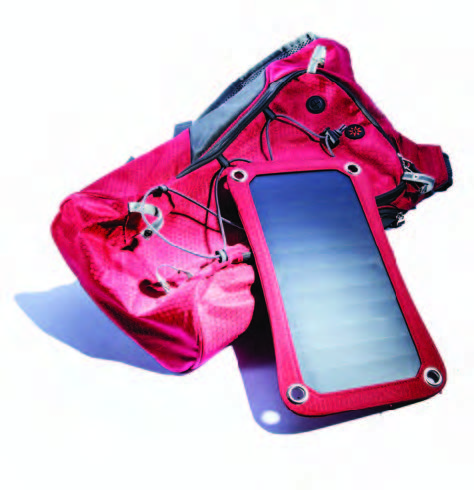
ENERGY SOURCE
SOLZbags’ Solar-Powered Backpack functions as a personal portable power station for smartphones, tablets,
and anything rechargeable by USB. Available at solzshoes.com.
Cool & Clever

MOVIE NIGHT
Luckies of London’s build-it-yourself Smartphone Projector turns your small screen into a private screening. Available at amazon.com.

LET THERE BE LIGHT
BeOn Burglar Deterrent Lightbulbs “listen” for potential break-ins and turn themselves on to scare away intruders. Available at beonhome.com.

THERE’S A RUB
Breo’s easy-to-store-and-carry
iSEE 310 Eye Massager uses air pressure and infrared heat to
provide the ultimate eye massage experience. Available at aliexpress.com.

DASHBOARD PAL
The Mojio is a 3G+GPS automotive monitor that plugs into a car’s onboard diagnostic port and uses a suite of apps to empower and inform the driver. Available at moj.io.

EASY RIDER
The Rockochet rock and debris deflector works with any skateboard and is spring-loaded to move out of the way when performing tricks. Available at thebigpitchtv.com.
“Bulgogi jeongol, marinated beef cooked with a tangle of sweet potato noodles that mingle with mushrooms, tofu and vegetables, is a party in a pot.”
By Andy Clurfeld
Seoulville
45 West Main St., Somerville. Phone: 908.854.4100
Open Tuesday through Thursday from 11:30 a.m. to 9:30 p.m., Friday and Saturday from 11:30 a.m. to 10:30 p.m., and Sunday from noon to 9:30 p.m. Note: Seoulville takes a late afternoon break Tuesdays through Fridays and closes from 3 to 5 p.m. Closed Mondays. Major credit cards and reservations accepted. Prices: Appetizers: $6 to $15. Barbecue dishes: $23 to $29. Dolsot (rice bowls): $15 to $17. Soups: $13 to$17. Casseroles (jeongol): $35 to $38. Entrees: $14 to $32. BYOB.
Kimchi jjigae is the Statue of Liberty of soups, beckoning for generations to the tired, the poor of health, those huddled under quilts struggling to breathe free of wintertime colds and flus. It is potent of broth, fired as it is by spices seeping from fermented vegetables and long-simmered pork belly, and soothing of texture, with slices of tofu and slivers of tenderized cabbage, radishes and other roots turning up in every bite. Kimchi jjigae fortifies the ailing body as it restores the flailing soul. It’s a wonder of a dish, and Seoulville, a relative newcomer to Somerville’s ever-diversifying restaurant scene, nails it.
Seoulville is the result of a natural progression: In before-culinary-enlightenment times in Somerville (and many county-seat centers of New Jersey suburbia), you had your red-sauce Italian joints, your chow mein Chinese joints, your continental masquerading as classy (dress up and take out Aunt Gert for her birthday) or slumming (diners didn’t serve moussaka in those days), and little else. Then came the white sauce known as alfredo, Szechuan and something called “cuisine minceur,” or a lighter side of French cuisine that blew the lid off the butter-and-cream classics and made us feel virtuous and oh-so-nouvelle.

Photos courtesy of Brian Kim/Seoulville
Was it sushi that helped us shake off the shackles of the 1950s Germanic meat-and-potatoes diet? The advent of olive oil? The Eurail pass that allowed post-grads to travel and travel and eat and eat? All of that, for sure. During the course of a decade or two, Japanese, Mexican, Indian, Greek, Spanish, Portuguese, Mediterranean from many ports, island fare and, critically, strains of America’s own regional specialties, came to star on menus at everyday-style strip-mall restaurants throughout the Garden State.
 Why it has taken more than a decade of the 21st century for Jerseyites to welcome Korea’s comfort foods to their backyards puzzles me. But after years of trekking to Fort Lee, Palisades Park and Edison, I’m grateful that Brian Kim and his parents Helen and Kenny were brave enough to bring Seoulville to at least one corner of New Jersey that lacked real-deal bibimbap.
Why it has taken more than a decade of the 21st century for Jerseyites to welcome Korea’s comfort foods to their backyards puzzles me. But after years of trekking to Fort Lee, Palisades Park and Edison, I’m grateful that Brian Kim and his parents Helen and Kenny were brave enough to bring Seoulville to at least one corner of New Jersey that lacked real-deal bibimbap.
Is there a food more comforting than this stew of a salad that flips crusty-topped baked mac-and-cheese on its fanny and actually weighs in as nutritious? Seoulville’s casserole of rice, beef (or chicken or tofu), slivers of mushrooms, carrots, spinach, daikon, a runny fried egg, a scattering of sprouts and, on the side, a cup of gochujang (a Korean chili paste embraced by millennials who spoon it on everything they eat while curled up on Klippan sofas) is filled with ingredients we know. Here, they’re re-assembled, cooked in a stone bowl that crisps some of the rice, and brightened by that smoky-hot-sweet-mysterious sauce it doesn’t take a prophet to forecast as the successor to salsa.
Brian Kim, the front-of-the-house man at Seoulville and the guy who truly wants to teach gochujang, kimchi jjigae and bibimbap to the uninitiated, is happy to guide you through the menu of classics tailored, in varying degrees, to American ways. Give a listen, give a try. You can eat your same-old any time.
 For here, the chicken wings come glazed sweet and spicy—and that do-si-do of dolce and daring isn’t sticky and cloying, but invigorating to the meat. Which is the point. The seafood and scallion pajeon, a pancake that tilts in texture to an omelet crossed with a crepe, isn’t even a tad oily, allowing the shreds of shrimp and squid to take charge. My favorite starter is the fried tofu, batter-dipped cubes with taut, crisp crusts that squirt with milkiness. Eat a cube, with or without a brush of sweet soy glaze, then check out the banchan–small bowls of vegetables and condiments, including cubed radish, sliced cucumbers, pepper-licked potatoes, marinated mungbean sprouts–and enjoy the interplay.
For here, the chicken wings come glazed sweet and spicy—and that do-si-do of dolce and daring isn’t sticky and cloying, but invigorating to the meat. Which is the point. The seafood and scallion pajeon, a pancake that tilts in texture to an omelet crossed with a crepe, isn’t even a tad oily, allowing the shreds of shrimp and squid to take charge. My favorite starter is the fried tofu, batter-dipped cubes with taut, crisp crusts that squirt with milkiness. Eat a cube, with or without a brush of sweet soy glaze, then check out the banchan–small bowls of vegetables and condiments, including cubed radish, sliced cucumbers, pepper-licked potatoes, marinated mungbean sprouts–and enjoy the interplay.
Made for sharing, and worth the investment, is the Korean hot pot. Bulgogi jeongol, marinated beef cooked with a tangle of sweet potato noodles that mingle with mushrooms, tofu and vegetables in a broth that tastes meaty but is all about slow-cooking with shiitake mushrooms, is a party in a pot. Stir in a spoonful of gochujang; snag a leaf of lettuce from your bossam platter and pile some of the beef and vegetables inside, wrap and eat; mix some of your banchan with your bulgogi on a side plate. This food is all about customizing to your own tastes. Your own expanding tastes, I hope.
Speaking of bossam, Seoulville’s pork belly boiled in water scented (I suspect) with ginger and garlic, peppercorns and onion till super-tender—then seared and served with leeks and onions—is minimalist compared to some contemporary takes. But comforting it is, and if you ply it with the sauces and banchan, you’ll be well on your way to understanding not only how to eat Korean, but what you can do to charge up your own dining regime at home.
Grilled beef short ribs are a no-brainer to eat and love. Served on a hot plate, meant to be speared and fired and consumed without judgment, they’re one of Seoulville’s relatively shy dishes. So is the cod braised in a soy-based sauce and served with a splay of mild vegetables. It reminds me of a tame version of miso-glazed black cod, a dish made famous at Nobu—a dish that once seemed as foreign as, well, kimchi jjigae.
 For weeks after that dinner, I thought of Seoulville. Its mission to serve as a bridge between mother country authentic and suburban Jersey educational did make me a little sad, however. I kept wishing the Kims didn’t feel that need to cotton to Western palates at all. But they are in it for the long haul, definitely wanting to take locals on a culinary trip. I stopped back with a friend, ostensibly for bowls of a couple of soups I’d missed, but really to see how the little place with the big heart was doing.
For weeks after that dinner, I thought of Seoulville. Its mission to serve as a bridge between mother country authentic and suburban Jersey educational did make me a little sad, however. I kept wishing the Kims didn’t feel that need to cotton to Western palates at all. But they are in it for the long haul, definitely wanting to take locals on a culinary trip. I stopped back with a friend, ostensibly for bowls of a couple of soups I’d missed, but really to see how the little place with the big heart was doing.
The room was nearly full at an early-dinner hour. I looked at the menu and chuckled. How could I not have ordered the famous “Hangover Soup,” arguably the most loved of Korean standards, my first time there? Its beefy broth, fortified with both soybean paste and red pepper paste and strewn with cabbage, sprouts and vegetables, might not have the infusion of jellied oxblood that the original must possess, but it scares my friend’s cold into submission. A seafood broth bolstered by that same spicy pepper seeps into soft tofu and infuses it with hints of shellfish, riffs of chilies; it makes for a soup I find magical.
 Seoulville, a modest but pleasant storefront with subdued décor and the most welcoming of service, could be part of the natural progression of things culinary. It might just be what the good denizens of New Jersey had to work up to. But it’s also about a carefully orchestrated menu by the Kim family and a style of cooking that’s at once educational and experimental, yet purposefully easy to digest. We’re getting there.
Seoulville, a modest but pleasant storefront with subdued décor and the most welcoming of service, could be part of the natural progression of things culinary. It might just be what the good denizens of New Jersey had to work up to. But it’s also about a carefully orchestrated menu by the Kim family and a style of cooking that’s at once educational and experimental, yet purposefully easy to digest. We’re getting there.
 BYOB
BYOB
It’s possible my love for Korean food is fueled by its compatibility with wine. Specifically, gewurztraminer, the fruit-forward, spicy personality white wine that adores intensely seasoned foods—particularly ones plied with chilies. Bring to Seoulville your best gewurz, be it from Meyer-Fonne or Albert Boxler. In reds, consider an un-shy number from Spain, perhaps something from Rioja or the Ribera del Duero. Or a Priorat. You want something that allows its fruits and heft to be balanced by spice and a little earthiness; a high-alcohol, amped-up, resolutely “big” wine will be discordant with the nuances of seasoning in Seouville’s signature dishes.
The more summer camps change, the more one critical thing stays the same.
By Rachel Rutledge
No industry is recession-proof. However, through good times and bad, summer camps have proved to be one of the country’s most enduring businesses. More than 10 million children in the United States will attend some kind of camp this summer, a number that includes both day-campers and sleep-away campers. The majority of camps are actually run by non-profit organizations. Roughly one-fifth of the nation’s 12,000 camps are for-profit businesses. More than half of U.S. camps are overnight camps. When every last penny is counted, the summer camp industry is estimated to generate more than $15 billion a year. Someone’s doing something right.
That “something” hasn’t changed in a long, long time. For the vast majority of kids, summer camp represents the first real step toward self-reliance and independence. One could argue that this step is more important than ever, given that we now find ourselves in an age of unprecedented over-parenting.
The job of a summer camp is to provide a safe and stimulating environment for children. In the old days, that often meant a squeaky bed, a leaky cabin, pimple-faced counselors, hiking, paddling, toasting marshmallows and providing a meal for mosquitos. In other words, the greatest time ever. Today, the goal is the same but the offerings are a bit more sophisticated.
ONE SIZE DOES NOT FIT ALL
If you are the parent of a “veteran” summer camper, then you already know what’s out there in terms of choices. If you have yet to go the summer camp route, prepare yourself to be overwhelmed. While there are many hundreds of long-established, traditional sleep-away camps (both for-profit and by non-profit religious and youth organizations), the most dynamic sector of this market is represented by camps that cater to a child’s talents and interests. Name a focus or specialty, and it’s a stone-cold guarantee that a Google search will turn up pages of possibilities. Is your child a lacrosse prodigy? A budding zoologist? The next Steve Jobs? The next J.J. Abrams?The next Gordon Gecko? Matching a young person with his or her passion has never been easier.
To the old leaky-cabin camper, this might seem like overkill. And perhaps it is. But that’s missing the point of the summer camp experience, which is putting your children in a place where they can be themselves for the first time.
Read that again and understand it because, whether it’s for a day, a week, a month or more, it is the #1 reason why you send your child to camp. And it always has been. When children are free of parental oversight, the prism through which they experience new things and interact with new people is different and genuine. They become socialized by their peers, not by mom and dad.
Many camps tout character-development as one of their main selling points. Looking past the marketing pitch, there is a lot of truth to this assertion. Character isn’t based on what you do when your parents are watching; it’s what you do when they’re not watching. Also, part of building character involves teamwork and leadership, which are baked into just about every camp experience.

www.istockphoto.com
PICKING A CAMP
With so many types, styles, locations and durations to choose from, the best way to find a good fit for your children is to identify camps that offer lots of activities based on their skills and interests. That means their interests, not yours. If you went to a traditional summer camp as a child, be aware that there is a natural tendency to be seduced by camps that you wish had existed 25 years ago. Your child isn’t you. You may be a 007 fanatic, but if your child is a soccer player, two weeks at Secret Agent Camp is probably a horrible idea (and vice versa).
A couple more rookie mistakes to avoid are sending your child to the exact same camp you attended 30 years ago, and also sending your child to the same camp as an older sibling. Yes, we all know that girls-only poetry camp you went to back in the ’80s changed your life. However, your daughter may want to learn to build virtual reality programs this July. Iambic pentameter may not be her thing. And just because your older son improved his vertical leap by 6 inches at basketball camp, it doesn’t mean his younger brother needs to become Scottie Pippen to his Michael Jordan.
Whatever experience you choose for your child, make sure to involve them as much as possible in the decision. Day camps can be time-consuming for a family and sleep-away camps financially challenging. Both can be emotionally stressful if you end up second-guessing your decision. But if everyone is on the same page, your first choice is likely to be the correct one.

www.istockphoto.com
SEPARATION ANXIETY
For families that have yet to embrace the sleep-away experience, long-term separation and the anxiety or homesickness that can result should be part of planning an extended summer camp stay. Even if your child loves blowing you off at every opportunity, that may not be the case on drop-off day with the prospect of limited contact for the next 2 or 4 or 6 weeks. Expect some tears; if not theirs, then yours (see KIDSICK? on page 71). Interestingly, separation anxiety actually refers to a disorder where individuals suffer excessive fear or distress when they are removed from people (and sometimes places) with whom they have a strong emotional attachment. Mostly it applies to children under the age of 4, and is part of the development process. But it can occur in older kids, as well as adults.
In camp-age children, some degree of separation anxiety is normal during the first day or two away. Clinically speaking, it must persist for at least 4 weeks before it is considered an actual disorder. Unfortunately, that’s the duration of many camp sessions! For the small percentage of campers who do have this problem, it’s no fun. They can experience intense anxiety and suffer panic attacks. They might also complain of medical issues, such as persistent stomach pain or headaches. Rarely, however, does true separation anxiety suddenly emerge at camp. Typically, parents of children with separation anxiety are aware of the condition long before summer camps are even discussed, which means sleep-away camps are not a viable option.
Needless to say, all types of camps—from sports camps to military camps to science camps to language camps—are not only good at dealing with mild bouts of separation anxiety, but tend to be experts with the specific type of kids and families that sign up. Truth be told, in the vast majority of cases, the recipe for success is identical: 20 minutes after mixing with the other campers, kids start looking forward, not back, and aside from an occasional pang of homesickness they are good to go for the day, the week, the month or more.
Should you suspect that you are the parent of an anxious camper, the one thing to avoid in the months prior to drop-off day is discussing how worried you are that the child will be lonely or homesick. Sharing your concerns is not making things better, and will almost certainly make things worse. Also, remember that kids aren’t stupid. If you constantly tell them how much fun they are going to have, and how they won’t miss home for a minute, they’ll know something is up. The same goes for constantly saying how much you’ll miss them for the time they are away.

www.istockphoto.com
TIMING IS EVERYTHING
We’ve all heard the stories about Type-A parents signing their kids up for private Pre-K when they’re still in the womb. Well, securing a spot for your child in your first-choice camp isn’t quite that bad, but if you are reading this story and the first day of spring is approaching, then the clock is ticking. In particular, traditional sleep-away camps tend to fill up quickly, as many families renew year after year. The more specialized sleep-away camps don’t get the same volume of repeat business, but open slots at the ones that market aggressively and are well-reviewed tend to disappear around this time of year.
A significant number of “resident” camps—sleep-away camps that like to make use of boarding school or college dorms—are built around one-week programs in sports, technology or creative and language arts. It is possible to program an entire summer of these short-duration camp stays for your child, usually with alternating weeks home and away. It’s a bit of a Rubik’s Cube to schedule (and not inexpensive) but from an enrichment standpoint it might be just what the doctor ordered, especially if you can’t find a 4- or 6-week camp that works for you.
Finally, don’t ignore day-camp opportunities that may exist close to home. Many of New Jersey’s private schools open their classrooms, gyms and playing fields to specialty camps during the summer as a way of generating extra income. Often, their best teachers (or coaches) either run or teach specific programs, so for the modest price of a day camp your child is exposed to high-powered educators doing what they love.
KIDSICK?
Kidsickness may not be a real word, but it’s a real thing. Many are the moms who tumble into rudderless melancholy triggered by the temporary absence of their children. Grown men have been known to burst into tears the first time they wave goodbye to their young campers. That’s perfectly fine. Nothing to be embarrassed about. Just keep it to yourself. A hug, a kiss and a quick exit at drop-off make for an ideal send- off. Don’t freak out your kid.
That being said, a certain percentage of parents really do find themselves suddenly and quite unexpectedly depressed and panicked—while their children are off having the time of their lives. According to the American Psychological Association, if you find yourself worried to the point of distraction while your child is off having fun in the woods somewhere, a session or two with a psychologist is a perfectly appropriate way to navigate your way through this new challenge. If parental anxiety is a simple matter of not knowing what a child is doing, or fretting obsessively about their safety, or that they’re not having enough fun, then parents should do themselves a favor and pick a camp that posts photos every day.
Editor’s Note: Each year in its first issue, EDGE writes about a different aspect of the summer camp experience. Log onto edgemagonline.com, click on the FAMILY tab and scroll backwards to find stories such as “Great…Outdoors” and “Extreme Summer.”
How will Smart Technology change our lives?
By William Mehlman
Edgar Degas was dining at a friend’s home when the telephone—at that time a decided curiosity—rang. As his host finished his conversation and returned to the table, he asked Degas what he thought of the new device “So, that is the miraculous new thing?” the famous painter sneered. “The machine rings, and you run to talk to it?”
Today’s “smart” technology gets a much warmer reception, although these products are frequently incomprehensible to many of us over the age of 50. My five-year-old solar-powered G-Shock watch, for example, has yet to be maximally programmed, because: (A) all I want to know is the correct Eastern Standard Time, (B) I can’t understand the manual, and (C) those buttons are so small.

amazon.com
Smart technology had its beginnings in products that, by today’s standards, are commonplace, if not actually antiquated. Mechanical adding machines gave way to electric calculators, which yielded to lightning-fast pocket calculators that provided, at their initial appearance, an astonishing array of functions. Today, every smart phone or smart watch can perform all of the standard math operations (ask Siri the square root of 200 or the cosine of 30 and you get your answer without even touching a button), —along with dozens of other functions. Familiar appliances are now performing unfamiliar tasks. For example, electronic ovens—which turned themselves off by means of a timer—are now being replaced by models that will shut themselves down when a probe reaches a predetermined internal temperature.
Yet the truly remarkable inventions are not merely upgrades of existing technologies so much as purveyors of unimagined services. Laptops, tablets, cell phones? Old hat. The smart technology that will soon be “everyday” includes quadcopters that are being built to allow same-hour deliveries from online retailers, and drones equipped with Go-Pro cameras, enabling humans to experience the thrill of flight without leaving the ground. Remember how Siri seemed unbelievable when it debuted in 2011? Now many consider Amazon’s Echo to be more versatile and accurate. Well, the next challenger may take us into the realm of social robotics. JIBO, an appealing little critter developed by Dr. Cynthia Breazeal of MIT, is billed as the “world’s first family robot.” JIBO is a member of the family, not just a search engine/database. It will answer questions, independently take photographs, provide audible versions of incoming texts, and act as a good-natured tutor. What it will not do (despite being called a robot) is heavy lifting. Or for that matter, any lifting—JIBO was not designed to do physical work of any kind. The projected sale price is in the $600 neighborhood, the cost of a high-end smartphone, or pair of designer shoes.

Tesla Motors
SMARTER CARS
If you’ve gone car-shopping recently, you know that automobile manufacturers have been incorporating smart tech features with every new model. Many of these features already come as standard equipment on top-of-the-line models, including the dozens of microprocessors that control individual components and operate unseen by the driver. The Mercedes-Benz C-Class now incorporates Active Blind Spot Assist, which serves to alert the driver to unseen dangers, and will “intervene actively” to prevent an accident. MagneRide is a suspension system controlled by magneto-rheological dampers that adjust stiffness by sending an electric current through iron filings suspended in fluid shocks, and can react to road conditions in a few milliseconds. It is available in vehicles manufactured by Audi, Ferrari and General Motors.
And then, of course, there is the Tesla, an all-electric sedan that has a singular array of smart features, including door handles that open out as the driver approaches, a wildly modifiable seventeen-inch touch-screen video display, gull-wing doors and medical-grade HEPA air filters. These gizmos do not make the Tesla a nerdy, unattractive clunker; the design features are stunning, and the Model S can go from 0-60mph in 3 seconds—more than a second faster than a Porsche 911 Targa 4S.The big automotive project on the horizon is the driverless car, although there are still major bugs to be dealt with. Google’s self-driving vehicle was recently stopped by a California motorcycle officer who wanted to cite the driver for driving too slowly, but couldn’t find anyone to cite for the offense.
 BUILDINGS & FOOD
BUILDINGS & FOOD
The largest smart technology projects comprise entire buildings. These towers employ systems to reuse “graywater,” which includes all water other than sanitary waste, for use in flushing toilets, irrigation systems, heating and cooling operations and fire protection. These buildings may also have sophisticated security monitors, climate control, renewable energy from solar panels and windmills, and “green” roofs, which capture rainwater for reuse and, due to their heavily planted surfaces, help control the internal climate of the building.
On a smaller scale, many of the advances in smart technology have taken place in the kitchen. Borrowing from methodology employed in profes-sional kitchens, high-tech refrigerators can be programmed with recipes and lists of ingredients. As food is prepared, the software tracks expiration dates, computes the quantity of each ingredient used, and updates shopping lists and analyzes nutritional and caloric values. Further down the road, the smart features on their way to America’s kitchens are truly awe-inspiring. That explains why a past feature in this magazine entitled Kitchen 2020 (available in the HOME section at EdgeMagOnline.com) is one of the most-visited articles we’ve run.
 Advances in technology have made research and development cheaper, faster, and more precise. The result is smart technology popping up in some surprising places. For instance, garage workshop tinkerers can obtain hardware like Raspberry Pi and Arduino—small computers that can be used as plug-in components in new creations. Meanwhile, 3D printers, computer-controlled routers and multiple-axis waterjets (which can cut almost any non-ceramic material) will likely soon be available at your local Lowe’s or Home Depot.
Advances in technology have made research and development cheaper, faster, and more precise. The result is smart technology popping up in some surprising places. For instance, garage workshop tinkerers can obtain hardware like Raspberry Pi and Arduino—small computers that can be used as plug-in components in new creations. Meanwhile, 3D printers, computer-controlled routers and multiple-axis waterjets (which can cut almost any non-ceramic material) will likely soon be available at your local Lowe’s or Home Depot.
WHIPPER SNAPPERS
The toy industry, for countless decades, has marketed two types of products: cool toys (kids want these) and educational toys (parents want their kids to have these). There have been a handful of crossover hits in recent years, but nothing like what’s in the pipeline. Artificial intelligence, voice recognition and adaptive learning technologies will be coming together soon to fuel a mind-blowing array of cool “smart toys.” CogniToys made a splash this year with its Smart Dinosaur, which is cool (Google the video) to watch. When some Apple-inspired engineer starts paying attention to this market, smart toys will also be cool to own, too. Another area of promise of smart toys is for children with special needs.
Smart toys may not penetrate the market as quickly as parents want or expect. There will almost certainly be red flags thrown up by education and child-development experts. If a smart toy is doing the teaching, what does that make teachers? If a smart toy is storing all the facts, how are kids supposed to retain and synthesize information?
And if a smart toy becomes a child’s best friend, how will that boy or girl absorb crucial lessons in social interaction and be able to function as adults?
So what’s the next big thing in smart technology? At this point, the Internet of Things (IOT) looks to be the new territory to be conquered. The IOT is a network connecting machinery, computers, tools, sensors, cloud-based information, rich analytics—in other words, pretty much anything and everything connected to the Internet. Google it.
Global connectivity is the target for the engineers and scientists working on the Internet of Things. As artificial intelligence (AI) is woven into the mesh of the IOT, the resulting construct hopefully will be a rational solution to many of the world’s problems. Then again, technology sometimes turns out to be a double-edge sword. The combination of IOT and AI could be the beginning of smart technology’s absolute control over the human race, a la The Terminator or, worse, The Matrix.
Degas may have been onto something.
Forget It
Inevitably, smart technology has a negative side effect, known as digital amnesia or digital obsolescence. This syndrome results from man’s ever-increasing reliance on digital equipment to store information that had always been held in the human memory. In effect, the “muscles” of the brain appear to atrophy as the cranial “hard drive” is employed with less frequency. Remember when you used to know all of the phone numbers of your close friends and family? If you’ve owned a smart phone for more than a year or two, you probably can’t recite half those numbers. Along similar lines, smart contraptions that perform functions traditionally performed by human hands are divorcing man from tactile knowledge and satisfaction.
Eating my way through ethnic Montclair.
By Helen Lippman
In the run-up to this year’s presidential election, we’re likely to hear a lot of divisive language about “foreigners” in our midst—so much so that one could easily forget that one of this country’s long-defining qualities has been the way it makes room for new people and cultures. Fortunately, we have places like Montclair to remind us. Craving Cuban black beans or an Indian samosa? You’ll find it here. Love Middle Eastern fare? Sample food from Greece, Israel, Lebanon, Morocco, Syria and Turkey—all within a walkable, small-town mile. As an added bonus, virtually all the restaurants are BYOB To tell you about a few of my go-to places, I’ll start, as my husband and I sometimes do, with the first meal of the day. Simit House Bakery & Co., a casual Turkish eatery on a corner of Church Street, calls its breakfasts “sunrise abundance.” You can order a ”petite” plate of tomatoes, cucumbers, olives and feta or a “hearty” serving with sausage, cured beef, hard-boiled egg and provolone added to the mix. I prefer menemen, a creamy egg dish with a kick from pepper paste, chopped tomatoes and onions. The namesake simit—a sesame seed-covered cross between a bagel and a pretzel that’s been a popular Turkish street food for hundreds of years—surrounds the eggs. Served warm, it needs no butter or jam.
Owner Ibrahim Yagci, a native of Istanbul, says his aim in opening the bakery was to preserve the simit’s legacy. But the menu has grown steadily in its two-plus years of existence. The sausage-shaped potato roll—onion-flavored mashed potatoes juxtaposed with the crunch of spicy phyllo dough—has become another local favorite, as has the spinach pie. Sweets, salads, soups, sandwiches and Turkish coffee are on tap, too.
 Uncle Momo, a French-Lebanese bistro a few blocks away, has a bountiful brunch menu (as well as lunch and dinner). Owner and chef Wissam Elmasri, who is Lebanese and attended culinary school in France, serves a mix of American, French and Middle Eastern fare. The crepes, made from quinoa, are light and airy. The most unusual is Zeit W Zaatar, made with labne (yogurt cheese), cucumbers and olives, all seasoned with dried thyme. My two favorites—spinach & goat cheese and smoked salmon & spinach—are delicately flavored and topped with greens. Ruby red pomegranate seeds give the salad an unexpected zing.
Uncle Momo, a French-Lebanese bistro a few blocks away, has a bountiful brunch menu (as well as lunch and dinner). Owner and chef Wissam Elmasri, who is Lebanese and attended culinary school in France, serves a mix of American, French and Middle Eastern fare. The crepes, made from quinoa, are light and airy. The most unusual is Zeit W Zaatar, made with labne (yogurt cheese), cucumbers and olives, all seasoned with dried thyme. My two favorites—spinach & goat cheese and smoked salmon & spinach—are delicately flavored and topped with greens. Ruby red pomegranate seeds give the salad an unexpected zing.
Individual pitzas, so named because they’re made with fresh-baked pita rather than traditional pizza dough, are also worth a try. I especially like the lamb pitza, seasoned with parsley, onions, and a hint of cinnamon. I’ve also become attached to the muhalabia, a milk pudding flavored with rosewater, and Wissam’s saffron rice pudding, a colorful twist on an old-fashioned dessert that’s wonderful with mint tea.
 Ani Ramen, a trendy Japanese noodle house that opened in 2014, is a good place for lunch, snack or a casual dinner. Its success is not surprising, given that owner Luck Sarabhayavanija and his team tried hundreds of combinations of noodles and broth before settling on a menu. The result: A half-dozen ramens to showcase and about 20 more in the mix. “We have a simple chicken broth, a more complex miso, a brothless ramen with intense flavor, a wonderful vegetarian—our hidden gem—and our signature rich and creamy pork broth,” he says.
Ani Ramen, a trendy Japanese noodle house that opened in 2014, is a good place for lunch, snack or a casual dinner. Its success is not surprising, given that owner Luck Sarabhayavanija and his team tried hundreds of combinations of noodles and broth before settling on a menu. The result: A half-dozen ramens to showcase and about 20 more in the mix. “We have a simple chicken broth, a more complex miso, a brothless ramen with intense flavor, a wonderful vegetarian—our hidden gem—and our signature rich and creamy pork broth,” he says.
My strategy is to share a bowl of ramen so I have room for other house specialties—the chili-charred, sea-salted edemame, the light and spicy kale salad and particularly, shrimp buns. Made of marinated panko shrimp (a house secret, whispers Sarabhayavanija) pickled cucumber, shredded cabbage and spicy miso mayo on a fresh-steamed bao bun, the taste keeps me coming back for more.
Right next door is Spice II, a restaurant owned by Sarabhayavanija’s mother, Sheree, and my favorite of the three Thai restaurants on Bloomfield Avenue. Its bright red and gold décor and subtle smell of spice evoke memories of a long-ago trip to Thailand. I usually start with the fried tofu, served with a piquant plum and peanut dipping sauce. The mango salad—a fruity blend with apple, pineapple and red onions in a chili-lime dressing—is another favorite starter, as is the lemongrass- and lime-infused tom yum soup. Many entrées can be tailored to taste, not just for spiciness or main ingredient, but also with a choice of basil, garlic or ginger sauce and a vegetable mélange. Chicken rama, made with carrots and broccoli in a peanut sauce that’s sweet and spicy, is a house specialty. Feeling adventurous? Grab a few friends and head to  Mesob, where the food cries out for sharing. It arrives on a pizza-sized communal platter, to be eaten not with fork or spoon but with injera, the spongy flatbread that doubles as an eating implement in Ethiopia. Friendly waiters keep replenishing your supply as long as there’s food left to be scooped up. Order carefully here. My husband and I often ask for chicken and lamb tibs—marinated and sautéed with onions, garlic and jalapenos—prepared “between mild and medium,” but which is quite spicy. If you prefer food with little or no heat, select dishes marked “mild.” Each entrée comes with two sides. Misia wat (spicy lentils) and kik aletcha (yellow split peas) are among my favorites.
Mesob, where the food cries out for sharing. It arrives on a pizza-sized communal platter, to be eaten not with fork or spoon but with injera, the spongy flatbread that doubles as an eating implement in Ethiopia. Friendly waiters keep replenishing your supply as long as there’s food left to be scooped up. Order carefully here. My husband and I often ask for chicken and lamb tibs—marinated and sautéed with onions, garlic and jalapenos—prepared “between mild and medium,” but which is quite spicy. If you prefer food with little or no heat, select dishes marked “mild.” Each entrée comes with two sides. Misia wat (spicy lentils) and kik aletcha (yellow split peas) are among my favorites.
 Costanera, a Peruvian restaurant whose owner/chef, Juan Placenia, was born in Lima but moved here when he was a tot, is two doors away. He graduated from the Culinary Institute of America, and everything I’ve eaten here—even the humble rotisserie chicken—has been top-notch. That said, fish and seafood take center stage. The restaurant features a raw bar and several ceviches, marinated in leche de tigre, the Peruvian name for the citrus and chili mix that cures the fish. But Placenia has a penchant for unexpected combinations, blending crab, ahi tuna and shrimp, for instance, in a single ceviche. Seafood entrees range from Asian-style shrimp to Peruvian seafood stew. Escabeche de pescado, pan-roasted cod with spiced pickled onions and yams, is my usual choice. Fried yuca, sweet plantains and quinoa salad, perked up with lime vinaigrette, almonds, tomatoes and the tartness of dried cranberries, are favorite sides. Dessert is a main event, too. The tres leches cake won’t disappoint, and the combinado classico blends the tastes of rice pudding and Peruvian purple corn pudding made with apricot, papaya and pineapple in a single parfait.
Costanera, a Peruvian restaurant whose owner/chef, Juan Placenia, was born in Lima but moved here when he was a tot, is two doors away. He graduated from the Culinary Institute of America, and everything I’ve eaten here—even the humble rotisserie chicken—has been top-notch. That said, fish and seafood take center stage. The restaurant features a raw bar and several ceviches, marinated in leche de tigre, the Peruvian name for the citrus and chili mix that cures the fish. But Placenia has a penchant for unexpected combinations, blending crab, ahi tuna and shrimp, for instance, in a single ceviche. Seafood entrees range from Asian-style shrimp to Peruvian seafood stew. Escabeche de pescado, pan-roasted cod with spiced pickled onions and yams, is my usual choice. Fried yuca, sweet plantains and quinoa salad, perked up with lime vinaigrette, almonds, tomatoes and the tartness of dried cranberries, are favorite sides. Dessert is a main event, too. The tres leches cake won’t disappoint, and the combinado classico blends the tastes of rice pudding and Peruvian purple corn pudding made with apricot, papaya and pineapple in a single parfait.
 If you love Paris—and who doesn’t?—save room for dessert at Le Petit Parisien. Crepes, salads and sandwiches are also served here, but the macarons, pastries and croissants create the biggest buzz. Macarons come in many flavors and hues, including raspberry, pistachio, blood orange and sour cherry. Little cakes and tarts are tempting, too. A strawberry passion fruit mousse cake, covered with tantalizing swirls and topped with a bit of chocolate wrapped in edible gold like a tiny treasure, catches my eye, but I order the flourless chocolate cake instead.
If you love Paris—and who doesn’t?—save room for dessert at Le Petit Parisien. Crepes, salads and sandwiches are also served here, but the macarons, pastries and croissants create the biggest buzz. Macarons come in many flavors and hues, including raspberry, pistachio, blood orange and sour cherry. Little cakes and tarts are tempting, too. A strawberry passion fruit mousse cake, covered with tantalizing swirls and topped with a bit of chocolate wrapped in edible gold like a tiny treasure, catches my eye, but I order the flourless chocolate cake instead.
Owners Limi Maldonado and Baptiste Chigot moved to Montclair directly from Paris, and the atmosphere here is as French as the pastries. “There are a lot of Francophiles in the area,” says Maldonado, “and they tell us they feel like they’re in Paris.” Indeed, anyone who has seen the lights of the Eiffel Tower sparkle at night and watches the blinking lights of the mini Eiffel Tower in Le Petit Parisien’s window can’t help but feel that way.
BLOOMFIELD & CHURCH
There are dozens of exceptional restaurants in and around Montclair. These are some of my favorites on Bloomfield and Church. Call or check their web sites for days and hours.
on BLOOMFIELD AVE.
Ani Ramen House
401 Bloomfield Avenue
973-744-3960 aniramen.com
Costanera
511 Bloomfield Avenue
973-337-8289
costaneranj.com
Fusion Empanada
706 Bloomfield Avenue
973-707-7174
fusionempanada.com
Mediterranea
578 Bloomfield Avenue
973-744-1300
mediterraneanj.com
Mesob
515 Bloomfield Avenue
973-655-9000
mesobrestaurant.com
Spice II
399 Bloomfield Avenue
973-509-2110
spiceii.net
Uncle Momo
702 Bloomfield Avenue
973-233-9500
unclemomo.com
on CHURCH STREET
Fresco
15 Church Street
973-337-8225 frescoonchurch.com
Le Petit Parisien
10 Church Street
973-746-0288 lepetitparisienmontclair.com
Manny’s Diner
12 Church Street
973-509-9600
mannysdiner.com
Mundo Vegan
20 Church Street
973-744-5503
mundovegannj.com
Raymond’s
28 Church Street
973-744-9263
Raymondsnj.com
Scala del Nonna Ristorante
32 Church Street
973-744-3300
scalinifedeli.com/scaladelnonna
Simit House Bakery & Co.
2 Church Street
973-893-5970
simitlove.com
EDGE takes you inside the area’s most creative kitchens.
 Paragon Tap & Table • Pan Seared Mahi Mahi
Paragon Tap & Table • Pan Seared Mahi Mahi
77 Central Ave. • CLARK
(732) 931-1776 • paragonnj.com
This rustic dish—Pan Seared Mahi Mahi served on ginger garlic bok choy stir fry, scallion jasmine rice topped with pickled lotus root—is a dish I created to take our guests on a culinary journey. The hearty texture of the fish balanced with the subtleties of the bok choy and jasmine rice make this dish a unique dining experience.
— Eric B. LeVine, Chef/Partner
 A Toute Heure/100 Steps Supper Club & Raw Bar
A Toute Heure/100 Steps Supper Club & Raw Bar
232 Centennial Avenue / 215 Centennial Avenue • CRANFORD
(908) 276-6600 • localrootscranford.com
In the heart of the winter season, the local waters are perhaps the best source of our seasonal favorites…from briny clams and oysters to amazing local catch you simply can’t go wrong.
— Andrea & Jim Carbine, Owners
 BoulevardFive72 • Grilled “Chermoula” Organic Salmon
BoulevardFive72 • Grilled “Chermoula” Organic Salmon
572 Boulevard • KENILWORTH
(908) 709-1200 • boulevardfive72.com
This Mediterranean-inspired, signature dish is served with fingerling potatoes, roasted golden-beet puree and a whole grain mustard sauce. The Salmon is sourced from the North Atlantic’s Faroese Island Fiords by Boulevard’s own seafood company.
— Scott Snyder, Chef/Owner
 Arirang Hibachi Steakhouse • Wasabi Crusted Filet Mignon
Arirang Hibachi Steakhouse • Wasabi Crusted Filet Mignon
1230 Route 22 West • MOUNTAINSIDE
(908) 518-9733 • partyonthegrill.com
8 oz. filet mignon served with gingered spinach, shitake mushrooms, and tempura onion ring.
 Daimatsu • Sushi Pizza
Daimatsu • Sushi Pizza
860 Mountain Ave. • MOUNTAINSIDE
(908) 233-7888 • daimatsusushibar.com
This original dish has been our signature appetizer for over 20 years. Crispy seasoned sushi rice topped with homemade spicy mayo, marinated tuna, finely chopped onion, scallion, masago caviar, and ginger. Our customers always come back wanting more.
— Momo, Chef
 Publick House • Kobe Short Rib
Publick House • Kobe Short Rib
899 Mountain Ave. • MOUNTAINSIDE
(908) 233-2355 • publickhousenj.com
Our Kobe short ribs are slow roasted, until the meat is tender enough to literally melt in your mouth. Served with garlic whipped potato purée and sautéed spinach, this dish is the perfect comfort food to escape any cold day.
— Bernie Goncalves, Owner
 Luciano’s Ristorante & Lounge • House Made Mafalda Pasta Inverno Style
Luciano’s Ristorante & Lounge • House Made Mafalda Pasta Inverno Style
1579 Main Street • RAHWAY
(732) 815-1200 • lucianosristorante.com
Our goal is to give our guests a pleasurable dining experience, with fresh ingredients and personable service in a beautiful Tuscan décor complete with fireplaces. Our house-made Mafalda pasta features slow-braised artichoke crowns, cipollini onions and oven-dried tomatoes in a saffron cream broth. Luciano’s is available for dining and private parties of all types.
— Joseph Mastrella, Executive Chef/Partner
 Morris Tap & Grill • BBQ Braised Pork Shank with Corn Hash
Morris Tap & Grill • BBQ Braised Pork Shank with Corn Hash
500 Route 10 West • RANDOLPH
(973) 891-1776 • morristapandgrill.com
With the winter here we have created this amazingly deep and rich dish for you to enjoy. This dish embodies the rustic cuisine that I am known for while creating textures.
— Eric B LeVine, Chef/Partner
 Thai Amarin • Goong Ma Kham
Thai Amarin • Goong Ma Kham
201 Morris Ave. • SPRINGFIELD
(973) 376-6300, (973) 376-6301 • thaiamarinnj.net
Batter fried jumbo shrimps with a tasty house made tamarind sauce, topped with roasted almonds and served on a bed of stir-fried spinach.
— Amy Thana, Owner
 Spirit: Social Eatery and Bar • Jersey Breakfast Bar Pie
Spirit: Social Eatery and Bar • Jersey Breakfast Bar Pie
250 Morris Ave. • SPRINGFIELD
(973) 258-1600 • mclynns.com
Get in the Spirit! Our Jersey Breakfast Bar Pie features potatoes, Taylor ham, cheddar cheese and onions. It doesn’t get more Jersey than that!
— Mark Houlker, Chef
 Arirang Hibachi Steakhouse • Volcano Roll
Arirang Hibachi Steakhouse • Volcano Roll
23A Nelson Avenue • STATEN ISLAND, NY
(718) 966-9600 • partyonthegrill.com
Hot-out-of-the-oven, crab, avocado and cream cheese rolled up and topped with a mild spicy scallop salad.
 The Manor • Petite Filet Mignon & Short Ribs
The Manor • Petite Filet Mignon & Short Ribs
111 Prospect Avenue • WEST ORANGE
(973) 731-2360 • themanorrestaurant.com
Our hearty petite filet mignon, accompanied by oh-so-rich short ribs that have been braised to tender perfection are ideal for the season. Add to that grilled baby leeks, forage mushrooms scented in bordelaise sauce, caramelized cipollini onions, and a delightfully-presented potato purée in a crisp potato basket and you have a taste of winter well worth the visit.
— Vincent Raith, Executive Chef
SEMINARS
TUESDAY, FEBRUARY 16
6:30 – 8:30 pm
Ready for Emergency:
Hands-On CPR Instruction
Presented by members of Trinitas Emergency
Response Team
CORE Building, 1164 Elizabeth Ave., Elizabeth, NJ
(Enter parking lot from South Broad St., next to Firehouse) Call (908) 994-8939 to register.
WEDNESDAY, FEBRUARY 17
5:00 pm – 7:30 pm
Have a Healthy Heart Beat from Your
Head to Your Feet
“Go Red for Women” Free dinner and seminar in observance of American Heart Month
Speaker: Mirette Habib, MD, cardiologist,
Trinitas Regional Medical Center
The Garden Restaurant, 943 Magie Ave., Union, NJ
Call (908) 994-8939 to register. Seating is limited.
TCCC SUPPORT GROUPS
Conference Room A or Conference Room B
Trinitas Comprehensive Cancer Center
225 Williamson Street, Elizabeth New Jersey 07207
All events take place from 1pm to 3pm.
Call (908) 994-8535 for current schedule.
Living with Cancer
Viviendo con Cáncer, Grupo De Apoyo
Living with Breast Cancer
Viviendo con Cáncer de Mama
Caregiving Support Group
Viviendo con Cáncer, Grupo De Apoyo
Viviendo con Cáncer, Apoyo Familiar
For more information on any TCCC support programs and to RSVP, please contact Roxanne Ruiz-Adams, LSW, (908) 994-8535. Por favor llame al (908) 994-8535 para confirmar su asistencia.
SPECIAL PROGRAMS
Health Services with Women In Mind
Trinitas helps provide women access to vital health services with a focus on preventive measures. These include educational programs and cancer screenings. Programs, offered in English and Spanish.
To learn more about these services, contact Amparo Aguirre, (908) 994-8244 or at amaguirre@trinitas.org
Ask the Pharmacist:
Medication Management
Free of charge, by appointment only.
Monthly on the 4th Tuesday, 11:30 am – 1:00 pm
Call (908) 994-5237
TRINITAS HEALTH FOUNDATION EVENTS
SATURDAY, FEBRUARY 27
12th Annual Evening at the Races
Meadowlands Racing & Entertainment,
East Rutherford, NJ
THURSDAY, MAY 12
Gala Dinner Dance
The Venetian, Garfield, NJ
THURSDAY, JUNE 16
8th Annual Andrew H. Campbell Sporting Clays Tournament
Hudson Farm Club, Andover, NJ
MONDAY, SEPTEMBER 12
Annual Golf Classic & Spa Day
Echo Lake Country Club, Westfield, NJ
For more information about the Foundation or to learn more about its fundraising events, (908) 994-8249 or lciraco@trinitas.org.
Proceeds from these and other events benefit the patients of Trinitas Regional Medical Center. Making reservations for Foundation events is fast and easy on your American Express, MasterCard, Visa or Discover card!
MEDICAL AND BEHAVIORAL HEALTH SUPPORT GROUPS
Diabetes Management Support Group
Monthly, First Monday, 2:00 – 3:00 pm
Kathleen McCarthy, RN, CDE (Certified Diabetes Educator)
Open to both diabetics and non-diabetics who want to learn more about diabetes prevention.
65 Jefferson Street, 2nd Floor, Elizabeth, New Jersey Call (908) 994-5502 for further information or registration
Sleep Support Group
For information about the Trinitas Comprehensive Sleep Disorders Center with two locations in Elizabeth and in Cranford at Homewood Suites by Hilton, call
(908) 994-8694 or visit www.njsleepdisorderscenter.org
Narcotics Anonymous
Monday 7:00 – 8:30 pm
Sunday 12:00 noon – 2:00 pm; Sunday 5:00 – 6:30 pm
Jean Grady, Community Liaison, (908) 994-7438 Grassmann Hall, 655 East Jersey St., Elizabeth
Alcoholics Anonymous
Friday 7:30 pm – 8:45 pm
Jean Grady, Community Liaison, (908) 994-7438 Grassmann Hall, 655 East Jersey St., Elizabeth
HIV Education and Support Program
for HIV Positive Patients
Monthly. Call for scheduled dates/times.
Judy Lacinak, (908) 994-7605
Early Intervention Program Clinic, 655 Livingston St. Monastery Building, 2nd Floor, Elizabeth
Mental Illness Support Group (NAMI)
for Spanish Speaking Participants
4th Friday of each month except August, 6:30 pm – 8:30 pm Mike Guglielmino, (908) 994-7275
Martha Silva, NAMI 1-888-803-3413
6 South Conference Room, Williamson Street Campus 225 Williamson Street, Elizabeth
TRINITAS CHILDREN’S THERAPY SERVICES
899 Mountain Avenue, Suite 1A, Springfield, NJ • (973) 218-6394
“10 Tips…” Workshops
The 10 Tips Workshop Series focuses on in-home or in-classroom activities. All information presented is appropriate for those who interact with children of all ages with an emphasis on preschool and school-aged children. Tips are geared toward home, school, and community environments.
All workshops take place at the Trinitas Children’s Therapy Services Center, 899 Mountain Ave, Suite 1A, Springfield NJ. We look forward to seeing you!
Workshops are $15 each with discounts available for enrollment in multiple sessions.
Tuesday, March 8, 2016 6:00 pm – 7:30 pm
10 Activities to Improve Following Directions Skills at home or in the classroom
Saturday, March 13, 2016 9:00 am – 12 noon
Repeat of February and March evening programs
Tuesday, April 12, 2016 6:00 pm – 7:30 pm
10 Activities to Improve Sensory Processing Skills at home or in the classroom, Part 1
Tuesday, May 10, 2016 6:00 pm – 7:30 pm
10 Activities to Improve Sensory Processing Skills at home or in the classroom, Part 2
Saturday, May 14, 2016 9:00 am – 12 noon
Repeat of April and May evening programs
Tuesday, June 14, 2016 6:00 pm – 7:30 pm
10 Activities to Keep Learning during the Summer at home or in the classroom
For more information or to register for one or more workshops, please contact Christine German, OTD, OTR, at (973) 218-6394, ext. 4012, or email CGerman@trinitas.org
COMMUNITY EVENTS
St. John’s Summit Concert Series
A variety of musical genres open to the community
Saturday, April 2, 2016 7:00 pm
Peter Yarrow (of Peter, Paul & Mary) along with special guests Mustard’s Retreat. Tickets are $40 (Children 12 & under $20)
St. John’s Lutheran Church, 587 Springfield Avenue, Summit, NJ
For tickets and more series information visit
www.stjohns-summit.org/concertseries
or call (908) 273-3846.
Spring Programs through May 2016
All programs are offered once a week for 45 minutes. These programs and/or group therapy sessions are a great alternative to individual therapy. They give children the opportunity to address key developmental areas in structured but busier environments that are more reflective of typical real-life home and school situations.
Cook with Us
Children learn the basics of daily nutrition and fitness as they prepare simple meals and snacks in a practical and fun environment. Overseen by a PT and personal trainer.
Scribbles to Script Handwriting Program
Handwriting for preschoolers through elementary school-aged children in a fun atmosphere that uses multi-sensory activities to reinforce learning. Uses the Handwriting Without Tears Program. It helps to reinforce learning and make writing fun! Overseen by an OT.
Sports Readiness
An introduction for children into several fall/winter sports, including soccer, basketball, football, bowling, and kickball, in a non-competitive. Overseen by a PT.
Social Butterflies
An opportunity for children to engage in activities to address turn-taking, topic maintenance, appropriate question asking, following non-verbal cues, and using manners. Overseen by a speech & language pathologist and/or an OT.
Typing Whizkids
An opportunity for children to learn efficient keyboarding/typing skills, including key location and finger placement, and speed and accuracy. Overseen by an OT.
My Trinitas Movement Groups
3 – 6 months; 6 months -12 months; 18 months – 24 months, 2 – 3 year olds
Children and parents/caregivers will participate in movement-based activities to address social interaction, turn-taking, following directions, motor planning, coordination, and motor skills. Sign up for one week or more, up to a full 12 weeks.
Parents Night Out
Drop your child(ren) off for a few hours of fun playtime, a movie and a snack while mom and dad get a needed night out. Scheduled quarterly. Call for dates.
To register for any programs or for more information, please contact Kevin Nelson at knelson@trinitas.org,(973) 218-6394, ext. 13, or fax (973) 218-6351.
To learn more, visit www.childtherapynj.com
This page is sponsored by
Elizabethtown Healthcare Foundation
Inspired to Care, Inspired to Give
 GOING BEYOND STIGMA
GOING BEYOND STIGMA
Members of the Adult Outpatient unit in Behavioral Health & Psychiatry joined in the Mental Health Association’s Fight Stigma Walk and 5K Run in Clark on November 7. Laura Varriale-Ciardiello came in second for the 5K run among the 150 walkers and runners on hand from all over the state. More than a dozen Trinitas employees and friends participated.
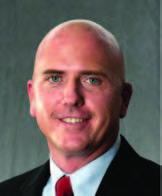 FORE!
FORE!
The PGA Championship is being held this summer at Baltusrol Golf Club in Springfield, NJ. Fans and volunteers from all 50 states and nearly 30 countries are expected to attend the event, which runs from July 25 to 31. “This overwhelming response from golf fans and volunteers across the country, and around the world, confirms that the 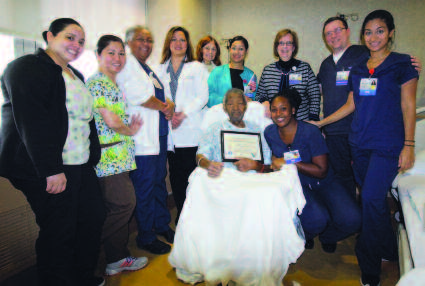 2016 PGA Championship will truly be a global event,” says Championship Director Ryan Cannon, who is responsible for managing all of the business outside the ropes — from marketing to security to government relations.
2016 PGA Championship will truly be a global event,” says Championship Director Ryan Cannon, who is responsible for managing all of the business outside the ropes — from marketing to security to government relations.

 LEADERS MEET
LEADERS MEET
Trinitas recently hosted a visit by Cathleen Bennett, Acting Commissioner of the New Jersey Department of Health, to gain a further understanding of healthcare delivery in New Jersey. In addition to meeting with Gary S. Horan, President and CEO, and other members of senior management, Acting Commissioner Bennett toured the Trinitas Comprehensive Cancer Center and the new Ambulatory Surgery Center.
 POSITIVE STEPS
POSITIVE STEPS
More than 100 members of the health, law enforcement, human services and faith communities participated in a comprehensive program held at Trinitas that focused on breaking the cycle of re-incarceration. Linda Reynolds (right), Director Adult Ambulatory Services at Trinitas, and Union County Sheriff Joe Cryan (left) were among the attendees. Keynote speakers included Ella Teal, CEO of the Urban League of Union County, and Senator Raymond Lesniak. The event was hosted by the Union County Re-Entry Task Force.
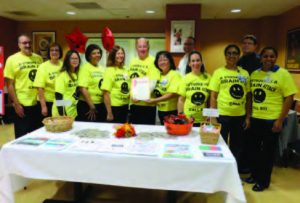 FAST ACTION
FAST ACTION
Facial drooping, Arm Weakness, Speech Difficulty, Time to Call 911 was the message as Trinitas observed World Stroke Day in October. Employees visited an information table to better understand “brain attack.” J. Christian Bollwage, Mayor of Elizabeth, presented Trinitas with a formal Proclamation saluting the medical center’s efforts to promote education and awareness of stroke. The Mayor, center, and Stroke Coordinator Terry Finamore, at his left, joined the Stroke Team for a group photo.
 CHEESE, CHATTER & CHEER
CHEESE, CHATTER & CHEER
Dr. Milton Kahn and Nancy Drumm were among the 20-plus attendees at an event held at The Eye Care & Surgery Center. Drumm, Membership Director of the Woodbridge Chamber of Commerce, hosted the event, which featured a Q&A with Dr. Kahn.
 PUTTING SENIORS FIRST
PUTTING SENIORS FIRST
The Senior Citizens Council of Union County hosted its fall health event dedicated to seniors issues and concerns. Dr. Vasyl Pidkaminetskiy, MD, Trinitas family medicine practitioner and internist in Rahway, discussed pain medication in seniors and avoidance of dependence and addiction, while Ann Marie Scanlon, Director of Diagnostics, offered blood pressure checks during the well-attended event.

New Jersey entertainers are known for their talent and for their toughness. That being said, Katrina Law takes tough and talented to a whole new level. She excels in action roles and heats up the screen with her sultry looks, but can also pull off the girl-next-door role. A standout student-athlete in her hometown of Deptford—and a graduate of Stockton University—she is a member of the National Honors Society and also a former Miss New Jersey Teen USA. If you want to meet Katrina at Comic-Con, plan to stand on line a while. She currently plays Nyssa al Ghul on the CW series Arrow (based on DC Comics’ Green Arrow) and portrayed the rebel leader Mira on the Starz series Spartacus. Both roles involved expertise in archery—a skill Katrina picked up with her usual aplomb. As Robert Piper discovered, it’s yet another case of Katrina hitting the bullseye.
EDGE: You have had recurring television roles as a terrorist [Resistance] a counterterrorist [The Rookie], a conspiratorial slave girl [Spartacus], and an anti-hero assassin [Arrow]. Your auditions must be fascinating.
KL: A lot of those roles really require a physicality, like the fight choreography, being able to handle yourself with weapons. I’m naturally aggressive in real life, which gives me advantages in this category of acting.

DeKnight Prod./Starz Originals
EDGE: What is it that draws you to these roles? Do they reflect some aspect of your personality?
KL: [Laughs] When I get really aggravated with somebody, I feel like some of my fantasy characters do. But other than that, I’m pretty easygoing and happy most of the time!
EDGE: What sports did you play in high school?
KL: I ran track and played soccer. I also was a cheerleader, a dancer and I weight-lifted.
EDGE: Was there one activity that stands out as having prepared you particularly well for your career?
KL: Yes, dancing, because it’s about learning choreography and maintaining it. I did everything—ballet, tap, jazz, modern, mirror ball, flamenco, ballroom dancing. So when it comes to fight choreography, for me it’s a more aggressive form of dancing. Knowing that my body can pick up the movements and retain them is the biggest aspect.

Bonanza Prod./Berlanti Prod./DC Entertainment
EDGE: You had a part in the 2000 film Lucky Numbers as a teenager. How did that happen?
KL: Lucky Numbers…I can’t even remember what year that was. They needed extras in Harrisburg, Pennsylvania, and I remember just being so excited. It was November and they wanted one of the extras to jump in the river, pretending it was summer. And I was like, Oh, I’ll totally do it. I was completely frozen afterwards, but then I realized that I really did enjoy doing it. I was thinking about making a career in acting anyway, so I asked the production assistant, like, how do I get a job on this? Or how do I volunteer to be a PA on this film? Thankfully, Nora Ephron was very kind to me. She allowed me to be on-set the entire month they were in Harrisburg. Then, eventually, there was a part where she needed four teenagers screaming out of a car at John Travolta. And she asked if I wanted to be a screaming teenager? I said, Yes. And that’s how I got my S.A.G. card.
EDGE: Who made the greatest impression on you during Lucky Numbers?
KL: Oh, well, John Travolta was so charming and so lovely and beautiful. He smiled at everyone. He was so kind when he entered the room—with his fellow actors and to me. He’s just very charming and lovely. I think I was a little star-struck by him.

Bonanza Prod./Berlanti Prod./DC Entertainment
EDGE: You could have gone to any college you wanted, including Rowan, in your hometown. What appealed to you about Stockton University?
KL: I was undecided about a career. I originally thought I was going to school as a dancer, but my high-school guidance counselor convinced me to go for physical therapy. However, in the back of my head, I knew I wasn’t going to be a physical therapist. Meanwhile, I’d always had my fingers dabble a little bit in Marine Biology. So in Stockton I essentially picked the school that offered all three.
EDGE: At what point did acting become a focus in your life?
KL: It was after I had gotten into Stockton. I decided to try doing summer stock and I ended up booking the role of Cassie in A Chorus Line. It was the first time that I sang, acted, and danced on stage. It was so fulfilling and one of the most enjoyable things I’ve ever done in my entire life. I went back to school and immediately changed my major from marine biology to theater. That’s kind of when it just took off.
EDGE: The Starz series Spartacus was one of your first major roles. How excited were you to get that part?
KL: I cried when I booked it. I just broke down and started sobbing hysterically in terrible joy tears, if that makes sense. I was so excited. I’d auditioned for it on a Monday, booked it on a Wednesday, and that same Wednesday they basically told me I needed to leave for New Zealand for the next three months that Friday. So I get on the plane and it was my first time ever flying in first class—I was so excited about the service and the amenities, and I watched four movies on the way over there. As soon as I got to the set, they threw me into hair and makeup and then into cast. By the end of the night I was delirious. It was a lesson learned to always sleep on the plane.
EDGE: How did you get on with your co-star Lucy Lawless?
KL: She was very kind. She introduced me to everybody—by the end of the day I think I had learned over 200 names. Just watching her act is a lesson in and of itself. Every now and then you think about somebody and why they have “star power,” or what it is about them that makes them succeed beyond others. Well, when you look into Lucy’s eyes for the first time they are so pure and focused that it just makes you understand why she got to where she is.
EDGE: How did the role in Arrow come about?
KL: I originally auditioned for a role on The Tomorrow People. It’s cast by David Rapaport, who also casts Arrow. I was completely wrong for the part—it was a British girl—but he said, “I want you to come back for this other role on Arrow tomorrow—and bring the accent.” I was like. Alright. So I auditioned and I ended up getting a call-back for it. This time they wanted me to do a chemistry read. My sides were originally with Stephen Amell, but they had me do them with Caity Lotz. I said, “These sides are very flirty and very much about our relationship. Is she my sister? Is she my friend? Am I a lesbian?” They said, “We can’t tell you.” So I basically walk into the audition for the chemistry read and there’s Caity Lotz. Apparently, we had chemistry, and that’s how I got my part.
EDGE: Were you into comics as a kid?
KL: I wasn’t into comics per se, but I was a fan of DC and Marvel as much as anyone else.
EDGE: What do you think of the whole Comic-Con culture now that you’re a part of it?
KL: I love it! I absolutely adore that being a nerd is now cool! They can finally come out in the open and be proud, and they have a place to celebrate what they love and the characters they develop. It’s just a beautiful place.
EDGE: What’s on the horizon for you project-wise?
KL: When I started off, I never thought that I’d land roles like I have on Spartacus and Arrow. I couldn’t have asked for better roles—it was so much fun, and both shows were international hits. So I hope that I continue to be surprised by really great projects. Upcoming I have Darkness Rising coming out and I have an episode of Uncle Buck, which is a sitcom for ABC, coming out.
EDGE: It seems like the theme of your life is “Set a goal, make it happen.” Do you ever think about getting involved behind the cameras?
KL: Yes and no. I feel like I’m a little disorganized. I have a very artistic mind and it’s very scattered. I don’t think I can focus enough to be able to direct. But who knows? Maybe. We shall see.
EDGE: Okay, a couple of final Jersey questions. You’ve been to a lot of beaches since you left New Jersey. Where do Ocean City and the other Jersey Shore beaches you know rank in the world of beaches?
KL: You know what? The Jersey Shore beaches are always going to be my number-one. This is where I grew up, it’s my heart. I know what the air smells like. I know what the ocean sounds like. I know what the water feels like. It’s home.
EDGE: Finally, if I ask someone from your hometown what’s the difference between a South Jersey Girl and a North Jersey Girl, what answer will I get?
KL: South Jersey girls are cooler! [Laughs] Oh, my god…I’m gonna get in so much trouble for that one.
Editor’s Note: Robert Piper is a freelance writer who lives in Chicago. He covers entertainment, pop culture, and health & wellness. Robert’s writing has appeared in The Huffington Post, Live Happy, and Origin Magazine.
Was there always music playing in your house?
There was. I was raised on music. My parents loved it. My brother, Adam, turned out to be the musician in the family. I was more interested in theater. My music training really didn’t begin until I was in college.
What was the turning point?
I was in a musical at Brookdale Community College, near our home in Colts Neck. Three of the musicians in the pit were jazz musicians who taught courses there. I’d always loved jazz and, as I got to know them and learned about what they did, we discovered we had a mutual affinity for the genre.
So that was your start as a jazz singer?
It was. These guys—Joe Accurso [piano], Gary Mazzaroppi [bass] and Doug Clarke [guitar]— took me under their wing and began bringing me out on gigs. Joe really helped me put my repertoire together and, through these guys, I got to meet and perform with jazz greats like Frank Vignola and Bucky Pizzarelli.” This was almost 10 years ago. They still play as a trio, and I still sing with them. They’re called Art Deco.
In 2015, you were selected by WNYC’s Jonathan Schwartz as one of the performers at that amazing Sinatra 100 event in New York.
Yes, I sang “Love Is Here to Stay” and “When Your Lover Has Gone.” I also did a medley of “I Got It Bad” and “If I Had You.” I enjoyed the challenge of blending those two songs, which express the unique dichotomy of love. One’s about being in love with someone who’s bad for you, while the other says I could do anything if I had you in my life. I tend to lean toward torch songs.
Do you have a favorite Sinatra song?
Wow, that’s difficult. One that stands out to me as being simple but poignant is “Guess I’ll Hang My Tears Out to Dry.” Early Sinatra is my preference, and that one is just beautiful.
You perform regularly at venues that are familiar to EDGE readers, including 100 Steps in Cranford and 16 Prospect in Westfield. What’s the difference between singing at smaller places as opposed to, say, Symphony Space in New York?
The thing I love about any live performance is the energy of the room. It’s all about the symbiotic audience-performer relationship. There’s an adrenaline rush you can ride in front of a big crowd, whereas the smaller spaces are more like an intimate conversation. It’s a rush, but in a different way.
Editor’s Note: To view and listen to Audra Mariel’s recent performances—including her Sinatra 100 medley—follow the links on her web site audramariel.com. For her most up-to-the-minute appearance schedule, visit her Facebook page. Audra’s self-titled album is available as a download on iTunes.














